#2000s home fragrance
Explore tagged Tumblr posts
Text

Bath and Body Works Slatkin and Co. Seaside Escape 3 Wick Candle
2009
Found on Ebay, seller magicandmoonbeamsllc
#bath and body works#slatkin and co#2009#seaside escape#2000s bath and body works#2000s slatkin candles#2000s candles#beach#2000s nostalgia#2000s home fragrance#seaside#vintage bath and body works#vintage slatkin candle#vintage bath and body works candle#blue#candle
4 notes
·
View notes
Text
my boyfriend got me my dream perfume for valentine's day and I'm so grateful<3

I love him sm
#valentines day#demeter#perfume#manic pixie dream girl#nostalgia#funeral home#fragrance#dark aesthetic#trashy 2000s#trashy y2k#trashy aesthetic#love#vampire aesthetic#vampires#draculaura#kieran valentine
6 notes
·
View notes
Text
honeys it girl magazine october edition!!⋆.ೃ࿔*:・🎀

welcome back to honeys it girl magazine, this is the october catalog. get ready for the inside scoop on data that i've collected, things i've learned/started doing, and just general info like that organized in kind of a teen-magazine inspired fashion. a magazine for it girls ✨ and now please enjoy, the it girl magazine.

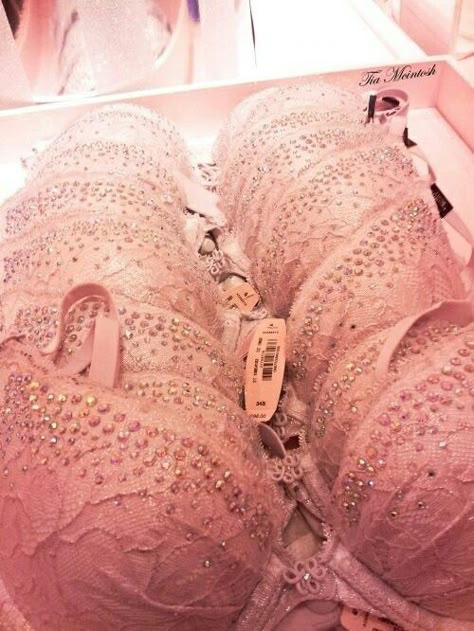

HOW TO HAVE THE MOST DOLLY SLUMBER PARTY EVER ;
when i think of the month of october i think of GLAMOROUS parties. and that incorporates girly slumber parties, halloween parties, a LOT of parties. SOO the kind of party that i wanted to focus on in this month's catalogue is slumber parties.
to throw a successful slumber party we first need a plan. make sure that u have refreshments, entertainment, invitations and all of that planned. if u wanna have a SUPER cute slumber party have a theme. some theme ideas can be
♡ victoria's secret (V.S. pj's, lingerie, everyone wears a V.S. robe etc)♡ 2000's ♡ movie based pajamas♡ a color scheme (black and pink is my fave)
and we can't have our girls being bored at our slumber party can we? make sure that u plan fun activities like having a fashion show (playing dress up) playing dress to impress or video games like that, baking sweet treats, karaoke, dolling each other up ETC. for refreshments you could do a snack bar or make mocktails, you could even do a milkshake station!
THE VICTORIA'S SECRET FASHION SHOW 2024 ANALYSIS ;
🧁 anok yai’s floral number (she’s literally blooming, she looks like a FLOWER. her hair is giving barbie dolll and ultimately she had my favorite look of the whole entire night. the WINGSSS, the shoes everything just goes together beautifully.)
🧁 gigi hadid (she looks like a lavender princess fairy and it looks amazing on her. but PLEASEE why the slick hair?? when i think victorias secret im thinking of bouncy voluminous hair. i LOVE her wings though. they're so big and over the top and i love it)
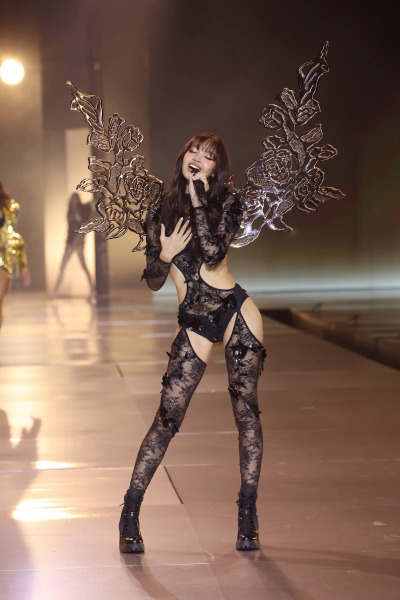


🧁 imaan hamman (also goes with lisa and anok yai in my top three favorite looks of the night. its so simple but in my opinion her look gives the victorias secret that we all know and love the most.)
🧁 alex consani (i rly rly love baby blue on her, again, please bring back bouncy voluminous hair. and i kinda wish they gave her fluffier wings.)
🧁 lisa’s black lacy number (def one of my favorites on the whole runway. i wish she had black lacy wings instead of the structured ones but easily one of my favorites)
🧁 maty fall (the silk, the feathers, chefs KISS. in his case i think the minimal wings look the prettiest because her outfit is fuller, the delicate wings complement it beautifully.)
OCTOBER BODYCARE, MAKEUP AND FRAGRANCE FAVORITES ;
body care : hello kitty strawberry oat milk body balm from creme, vanilla creme brûlée body lotion from hempz (this one smells like HEAVEN), and fresh cream by philosophy. i rly loved the nyx marshmallow primer and for fragrance the soft and dreamy scent from victorias secret PINK (it just gives me so much nostalgia around this season 💗🍬)
DRESS TO IMPRESS NEW UPDATE ;
dress to impress is every hottie's favorite game, and when DTI dropped its halloween update, everyone including myself was so super STOKED about it. there are new codes and SO many new possibilities unlocked. speaking of codes…💬🎀

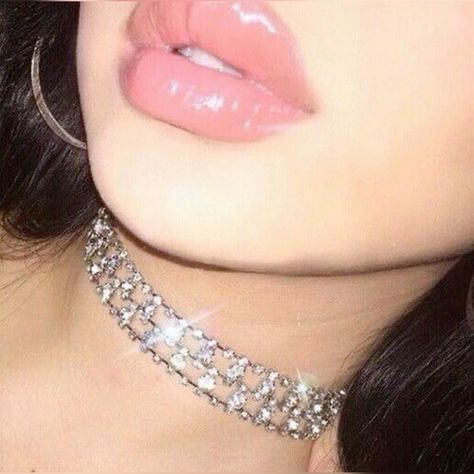
❤︎ CH00P1E_1S_B4CK (boots, jacket and skirt)
❤︎ UMOYAE (skater dress)
❤︎ D1ORST4R (star purse and hair bow)
❤︎ S3M_0W3N_Y4Y (axe weapon)
OCTOBER IT GIRL ACTIVITIES ;
like i said in the first section of this month's magazine, i associate october with PARTIES and ik a lot of us are going to halloween parties so i just wanted to share some rules of thumb especially if its ur first party, on how to have fun while also being safe.
make sure that u have a designated driver at all times
don't overdo it with the drinks, thats never hot
make sure u have ice cold water to sip on, on the car ride home



be careful, make sure that drinks are poured in front of u or you get them yourself
dont party by yourself GO WITH A FRIEND U TRUST AND STICK TOGETHER
and of course have fun 🍭 this year im dressing up as the white rabbit from alice in wonderland so im super excited to look cute and have fun with my friends
if partying is not ur thing there are SO many fun things that you can do this october. for example binge watching october movies, or doing fall related activities like we talked about in last month's section. some movies that i love to watch in october are
♡ jennifer's body
♡ ginger snaps
♡ scream
♡ the love witch
i dont usually watch things that are too scary which is why my list is so short 😭 i get scared rly easily so i try and watch movies that aren't SO scary but if you like that there are some rly good ones out there.
WHATS MY HOROSCOPE? (OCTOBER 27-31)
♡ for virgo, the libra solar eclipse on october 2 brings an unexpected opportunity to your financial realm and a boost of confidence as it allows you to showcase your talents. a surprising gift of abundance arrives! jupiter stations retrograde in gemini on the ninth, prompting you to review your long-term goals over the next five months.
♡ for aries, on october 2, the libra solar eclipse brings change to your relationships. unstable connections will be tested while authentic bonds will be strengthened. look for opportunities in love. jupiter stations retrograde on the ninth, traveling backward through the sign of gemini and your communication sector. between now and february 2025, you’re invited to explore the ways in which you connect with others. explore a variety of ways to express your mind. jupiter loves to facilitate growth, even when retrograde, making this a profound time to learn quickly.



♡ for taurus, the libra solar eclipse on october 2 awakens your mind, body, and soul! touching down in your sector of self-care, the eclipse offers the opportunity to embrace a new cycle of health and wellness. your skills will receive a boost. jupiter stations retrograde on the ninth in your zone of money and resources, challenging you to explore a new approach to the material world over the next five months.
♡ for gemini, on october 2, the libra solar eclipse brings change to your romantic life. an empowering new cycle begins that encourages you to embrace pleasure and distance yourself from people or situations that no longer bring authentic joy. this is a time to prioritize what truly makes you happy. jupiter stations retrograde in your sign on the ninth, urging you to reinvent yourself over the next five months.
♡ for cancer, the libra solar eclipse on october 2 lands in your zone of intuition and brings a new cycle of emotional strength. this eclipse could bring unexpected changes to your environment, so be sure to honor your comfort and security. jupiter stations retrograde in gemini and your zone of rest on the ninth, inviting you to relax over the next five months.
♡ for leo, on october 2, the libra solar eclipse activates your communication zone, setting off a new cycle of connection. unexpected information emerges that inspires you to action. jupiter stations retrograde in your friendship sector on the ninth. over the next five months, consider ways you can strengthen your bonds with others.
♡ for libra, on october 2, a powerful eclipse in your sign brings surprising new beginnings! personal revelations provide fresh excitement for the future. as you walk a new path, remember how powerful you are. jupiter stations retrograde in gemini on the ninth, encouraging you to learn through experience over the next five months.
♡ for scorpio, on october 2, the libra solar eclipse touches down in your zone of rest, encouraging surrender and relaxation. through soul-searching, this eclipse could bring forth a much-needed spiritual awakening. the energy is also creative and imaginative. jupiter stations retrograde in gemini on the ninth, encouraging you to embrace transformation over the next five months.
♡ for sagittarius, on october 2, the libra solar eclipse activates your zone of friendship and hope, inspiring faith for the future. expect surprising information in your social circles! an exciting new collaboration could be in the works. jupiter stations retrograde in gemini and your relationship realm on the ninth, encouraging you to explore your role in your closest connections over the next five months.

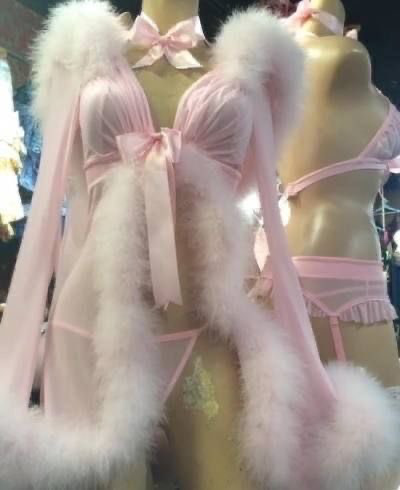

♡ for capricorn, on october 2, the libra solar eclipse awakens your career zone, encouraging you to step into your power! an unexpected opportunity to showcase your gifts emerges, and important people are noticing your strengths. surprises related to your career could open new pathways to success. jupiter stations retrograde in gemini on the ninth, prompting you to explore new self-care practices over the next five months.
♡ for aquarius, on october 2, the libra solar eclipse activates your sector of adventure, eliciting excitement! you could be taking an unexpected trip or seizing an opportunity to broaden your horizons. knowledge is power, and this eclipse could provide surprising information that helps you expand. jupiter stations retrograde in gemini on the ninth, encouraging you to explore your creative side over the next five months.
♡ for pisces, the libra solar eclipse on october 2 brings major transformation in your realm of money and intimacy! unexpected changes open new doors of opportunity, and while this is exciting, it requires you to face your shadow and abandon fear. a surprising, magical moment of abundance emerges. jupiter stations retrograde in gemini on the ninth, inviting you to rest and embrace comfort over the next five months.
#honeysitgirlmagazine✨💝#honeytonedhottie⭐️#it girl#becoming that girl#self concept#self care#that girl#self love#it girl energy#dream girl tips#dream girl#dream life#dreamy#hyper femininity#hyper feminine#girly#girl blog#it girl magazine#it girl lifestyle#it girl journey#princess#dolly#fashion#passion 4 fashion#girly magazine#horoscope#monthly catalogue#victorias secret#victorias secret fashion show 2024#beauty secrets
574 notes
·
View notes
Text










Tommy Hilfiger Inc.
Tommy Hilfiger Inc. is an American clothing brand, manufacturing apparel, footwear, accessories, fragrances and home furnishings. Popular throughout the 1990’s and 2000’s.
#tommy hilfiger#gwen stefani#Britney spears#Aaliyah#Kate moss#justin timberlake#90s#1990s#y2k#2000s#00s#90s fashion#1990s fashion#2000s fashion#00s fashion#2000s nostalgia#2000s kids#y2k nostalgia#2000s style#y2k aesthetic#y2k style#2000s kid#90s nostalgia#90s kid#90s aesthetic#1990s nostalgia#1990s aesthetic#90s style#2000s aesthetic#2000s core
265 notes
·
View notes
Text
Hermes/Mercury In Poetry: A Compilation Of Poems By Sappho, Carl Dennis, And Shirley Burger With Mediocre Analysis
Hermes and Mercury are a god who has remained in the public consciousness despite the fact that worship of them has dwindled to nearly nothing (shoutout to my fellow Ancient Greek polytheists, though). Due to still being in the public consciousness despite everything, it’s not that surprising to see Hermes and Mercury still popping up in everything from video games to battleships, and don’t get me started on Hermes Trismegistus. (No, really, please don’t, I don’t know enough about Hermeticism to get into that.)
This is not any form of professional comparative essay. Or even a casual comparative essay. This is just me going feral over poetry and Hermes/Mercury. Let’s get this shit started.
In Sappho: A New Translation (translated by Mary Barnard), Hermes appears in two parts: 14 and 97. These depict Hermes in two vastly different roles: cupbearer and psychopomp.
Fragment 14 goes as thus:
PEACE REIGNED IN HEAVEN Ambrosia stood already mixed in the wine bowl It was Hermes who took up the wine jug and poured wine for the gods
Fragment 14 depicts Hermes in the role of cupbearer for the gods, a duty more often attributed to Hebe (the daughter of Zeus and Hera, the goddess of youth) or Ganymede (a Trojan prince, the constellation Aquarius, god of homosexual love, playmate of Eros and Hymenaios). Theoi.com lists him as being a cupbearer among other things due to his ministry to Zeus, but I’m gonna be honest, I had a hard time figuring out how to read their citations and couldn’t find any other instance other than the general page about this particular thing. The most likely answer here, though, is that I just suck at reading.
Meanwhile, Fragment 97 depicts a more well-known side of Hermes:
I HAVE OFTEN ASKED YOU NOT TO COME NOW Hermes, Lord, you who lead the ghosts home: But this time I am not happy; I want to die, to see the moist lotus open along Acheron
Our girl Sappho was fucking going through it, man. This poem calls to Hermes as a psychopomp, a duty attributed to him in Homer’s Odyssey (an epic from C8th B.C.), the Homeric Hymn 4 to Hermes (an epic from C7th to C4th B.C.), Aeschylus’s Libation Bearers (a tragedy from C5th B.C.), and more and more as we get closer to the current period in history. According to the Homeric Hymn 4, he got this job after being sent to retrieve Persephone and handling that whole scenario, so Zeus just appointed him to keep that psychopomp job. The downsides of pulling things off well, I suppose.
So, that was how Sappho perceived Hermes through poetry. How about something more...modern? In 2001, Carl Dennis published “Practical Gods”, which won the 2000 Ruth Lily Poetry Prize and the 2002 Pulitzer Prize. Greek, Catholic, and Christian figures appear through these poems as Carl Dennis draws on mythological and religious imagery for his works. Hermes appears in “A Priest of Hermes” in his psychopomp duties, and the idea of Death and how one dies appears in other poems in this book, like “Eternal Life” and “Progressive Health”. (Not every poem in this work is focused on Death, but those ones were the most striking to me when I first read them.)
A Priest of Hermes The way up, from here to there, may be closed, But the way down, from there to here, still open Wide enough for a slender god like Hermes To slip from the clouds if you give your evenings To learning about the plants under his influence, The winged and wingless creatures, the rocks and metals, And practice his sacred flute or dulcimer. No prayers. Just the effort to make his stay So full of the comforts of home he won’t forget it, To build him a shrine he finds congenial, Something as simple as roofed pillars Without the darkness of an interior. If you’re lucky, he’ll want to sit on the steps Under the stars for as long as you live And sniff the fragrance of wine and barley As it blows from the altar on a salty sea breeze. He’ll want, when you die, to offer his services As a guide on the shadowy path to the underworld. Not till you reach the watery crossing Will he leave your side, and even then He’ll shout instructions as you slip from your shoes And wade alone into that dark river.
To me, this poem feels warm and comforting, in a way that Death is only sometimes described. Death as a gentle force is becoming more popular to depict rather than violent Death, as Death is slowly being seen as something that comforts you after a long period of hardship (fighting terminal illness, being in danger, a heart attack, et cetera) or to help you step forward if you die in a more peaceful manner (such as dying in one’s sleep). This poem being so calming makes sense: a psychopomp’s duty is to guide you to the afterlife, and it’s hard to guide someone who’s flipping the fuck out.
Let’s fast forward five years, to 2006. Noble House Publishing put out “Songs of Honour”, an anthology of poems that span all kinds of authors and subjects. (It’s also completely unclear whether or not the writers knew that their works were being used in this, and it doesn’t have an ISBN...) But the poem of note here is Shirley Burger’s “Mercury, Oh Caduceus”, found on page sixty-nine (nice). Let’s see if you can figure out why it was so interesting to me. The poem goes as follows:
Mercury, Oh Caduceus Mercury, such a toxic rhyme... A goddess, once upon a time... Twisted with your mammon ways... Oh my Father counts the days... When your Caduceus will be revealed... For all your bronze and all your “steal”... You’ve preyed upon the children dear... And as you speak all I can hear... Is poverty upon us all... You’ve tripped us up and made us fall... Soon your serpent ways will see... Nothing about you makes us free... Your lies are beneath all your hidden ways... Oh how my Father counts the days... Until your statue crumbles hard... And frees the people once again... From what you’ve told us is our friend... Your lies stroll forth unto the day... When thoughts of you will go away... Forever.
Okay, yes, yes, this poem treats Mercury as being synonymous with the serpent that convinced Eve to bite the fruit of knowledge and reads like a Christian freaking out about heresy and misleading the children, yes, sure, whatever. It’s like the polar opposite of Carl Dennis’s approach to Hermes.
But most interesting to me is the fact that the author refers to Mercury as a goddess. This is fascinating to me because in Western astrology, despite Mercury being a “masculine” god, Mercury the planet is considered to be perfectly neutral in terms of masculinity and femininity. I have no idea how Shirley Burger managed to make the jump from “Mercury is a Roman god” to “this is a goddess”, considering everything, but it’s fascinating to me.
There is no closing statement for this post! It’s not even a formal essay! I’ve said “fuck” four times, after all. But this is the end of the Tumblr post. Enjoy the poetry.
Sources & References
(Yes, I found an online MLA 9th edition citing website tool just to make these look fancy. Fuck you.)
Wikipedia contributors. “Hermes.” Wikipedia, 10 Jan. 2002, en.wikipedia.org/wiki/Hermes.
Wikipedia contributors. “Mercury (mythology).” Wikipedia, 17 Nov. 2024, en.wikipedia.org/wiki/Mercury_(mythology).
“HERMES - Greek God of Herds and Trade, Herald of the Gods.” Theoi Greek Mythology, www.theoi.com/Olympios/Hermes.html.
Sappho. Sappho: A New Translation. University of California Press, 2019.
Dennis, Carl. Practical gods. National Geographic Books, 2001.
Burger, Shirley. Songs of honour. Edited by Noble House Staff, Noble House Publishers, 2006. “Mercury, Oh Caduceus”, pg. 69
Burk, Kevin. Astrology: Understanding the Birth Chart : a Comprehensive Guide to Classical Interpretation. Llewellyn Worldwide, 2001.
23 notes
·
View notes
Text



















Candle Day
Candles offer more than just light — fill your home with sweet scents and transform any space into a warm oasis.
For those who absolutely love the joy of lighting candles to provide warm, soft light as well as a delightful fragrance to their homes, especially in winter time, Candle Day is a beautiful way to usher in the cooler season.
History of Candle Day
Typically celebrated on the first Saturday of December, Candle Day was founded by the American retail company, Bath & Body Works. Originally owned by the Limited Brands, which also owns brands such as Victoria’s Secret and Abercrombie & Fitch, the first store in the Bath & Body Works chain was opened in Cambridge, Massachusetts in 1990.
Selling products for the body, as the name implies, the company grew rapidly and now runs more than 2000 stores all over the world, 1600 of which are in the United States.
Bath & Body Works is a brand that is particularly beloved for its amazing scents that have a wide range of popularity, from fruity scents to flowers and also offering a line for men. Some of the most popular scents have been Sweet Pea, Japanese Cherry Blossom, Cucumber Melon and Country Apple.
Within these popular scent lines, as well as many others, are many products such as body lotions, fragrances, room sprays and, of course, candles. And for many people, Candle Day is one of the best times of the year to celebrate at Bath & Body Works because that’s when they hold some of their best sales.
Because the season for Christmas and other winter holidays often includes gift-giving, and because candles make incredible gifts, Candle Day was started in 2013. Plus, it’s a great time to simply stock up on candles for the cold, winter months.
So get ready for the fun and celebration of Candle Day!
How to Celebrate Candle Day
Candle Day offers a variety of options for just about any personality, whether looking for some time to spend at home or getting out and taking advantage of various sales. Consider celebrating with some of these ideas:
Light a Candle
Candles can bring so much comfort and warmth to a room, especially if they also envelop the room with a cozy and delicious scent. Fragrances such as Champagne Toast, Cinnamon Apple, or Strawberry Pound Cake are a lovely way to enjoy the day.
Buy a Candle (or Several!)
Head to the local Bath & Body Works to get access to their Candle Day sales and discounts, or look them up online and have the products delivered directly. This annual event typically provides customers with the opportunity to get the brand’s most famous 3-wick candles at a deeply discounted price. Other brands, such as Yankee Candle, may also be offering special prices in honor of Candle Day.
Give a Candle for Candle Day
What a great time to delight and surprise someone with a little present in honor of Candle Day! Find out which scents are a friend’s favorite and get them a large winter-themed pillar candle in honor of the season. Or leave a small votive on the desk of a coworker as a little bit of encouragement.
Source
#USA#Original New York Cheesecake#birthday#travel#original photography#New York City#electrical candle#Stephen A. Schwarzman Building#Chocolate Peanut Butter Cake#Strawberry Shortbread#Toronto#Canada#Luzern#Lucerne#Fort York National Historic Site#Monument Valley#vacation#tourist attraction#landmark#architecture#Candle Day#7 December 2024#First Saturday in December#CandleDay
3 notes
·
View notes
Text
𝗠𝗮𝗿𝗴𝗼𝘁 𝗘𝗹𝗶𝘀𝗲 𝗥𝗼𝗯𝗯𝗶𝗲-𝗚𝗼𝘀𝗹𝗶𝗻𝗴, was born on 2 July 1990 in Dalby, Queensland. She is the second youngest of four. Her parents separated when she was five. Robbie and her siblings were raised by their single mother and had minimal contact with their father. The family spent most of Robbie's upbringing on her grandparents' farm in Currumbin Valley in the Gold Coast hinterland. An energetic child, Robbie often put on shows at her home.

She was enrolled in a circus school by her mother, where she excelled at the trapeze, earning a certificate in it at the age of eight. In high school, Robbie studied drama at Somerset College. As a teenager, she worked three jobs: tending bar, cleaning houses, and working at Subway. After graduation, with a few commercials and independent thrillers under her belt, Robbie moved to Melbourne to pursue acting professionally.
In May 2016, Calvin Klein announced that Robbie would be the face of the upcoming Deep Euphoria fragrance. In 2017, she appeared in a Nissan commercial about electric vehicles. In February 2018, Robbie was announced as a brand ambassador for 𝖢𝖧𝖠𝖭𝖤𝖫. She was the last ambassador chosen by Karl Lagerfeld before his death in 2019. Robbie later became the face of the Gabrielle Chanel Essence fragrance. She was named one of the best dressed women of 2018 and 2019 by fashion website Net-a-Porter
Robbie met successful British actor and producer 𝗥𝘆𝗮𝗻. 𝗧𝗵𝗼𝗺𝗮𝘀 𝗚𝗼𝘀𝗹𝗶𝗻𝗴 during the filming and production of Barbie in 2019, and they married in a private ceremony on Malibu Beach in June 2024. She and Rosamund initially lived in London in a three-bedroom house shared with five other friends. They later moved to Los Angeles. The couple's second child was born in October 2024, and their first child was born in May 2022.
Robbie is an avid ice hockey fan and supports the New York Rangers. Robbie is also a fan of the English football team Fulham F.C.




Robbie studied theater at Somerset College and began her career in independent productions in the late 2000s, before appearing on the soap opera N͟e͟i͟g͟h͟b͟o͟r͟s͟ (2008–2011). After moving to the United States, she starred in the drama series P͟a͟n͟ A͟m͟ (2011–2012) and had a prominent role in the film T͟h͟e͟ W͟o͟l͟f͟ o͟f͟ W͟a͟l͟l͟ S͟t͟r͟e͟e͟t͟ (2013). Robbie's popularity continued to grow after starring in roles in F͟o͟c͟u͟s͟ (2015), as Jane Porter in T͟h͟e͟ L͟e͟g͟e͟n͟d͟ o͟f͟ T͟a͟r͟z͟a͟n͟ (2016) and as Harley Quinn in the DC Extended Universe, starting in S͟u͟i͟c͟i͟d͟e͟ S͟q͟u͟a͟d͟ (2016).
Robbie received great critical approval and was nominated for a BAFTA and Oscar for best actress for playing skater Tonya Harding in the biopic I͟, T͟o͟n͟y͟a͟ (2017). This acclaim continued after her roles as Elizabeth I of England in the drama M͟a͟r͟y͟ Q͟u͟e͟e͟n͟ o͟f͟ S͟c͟o͟t͟s͟ (2018), Sharon Tate in the comedy-drama O͟n͟c͟e͟ U͟p͟o͟n͟ a͟ T͟i͟m͟e͟ i͟n͟... H͟o͟l͟l͟y͟w͟o͟o͟d͟ (2019) and a fictional Fox News employee in the drama B͟o͟m͟b͟s͟h͟e͟l͟l͟ (2019). . She was nominated for a BAFTA for these three projects and an Oscar for best supporting actress for the last. Also in 2022, Robbie starred in A͟m͟s͟t͟e͟r͟d͟a͟m͟, a film that was released shortly before B͟a͟b͟y͟l͟o͟n͟, which premiered alongside Brad Pitt, where she played Nellie LaRoy.
In 2023, she starred in the film B͟a͟r͟b͟i͟e͟ as the protagonist Barbie. The film was the biggest box office hit of 2023 and a huge success with audiences and critics. Margot Robbie's performance was highly praised. Later, when the list of films nominated for the 2024 Oscars was released, Margot Robbie was not nominated in the Best Actress category for the film, which generated much outrage and protests, being considered one of the biggest injustices of the awards. Despite this, Robbie said she was not sad about not being nominated. She also had a brief role in A͟s͟t͟e͟r͟o͟i͟d͟ C͟i͟t͟y͟. After only producing the comedy My Old Ass in 2024, Robbie returns to theaters in 2025 opposite Colin Farrell in A͟ B͟i͟g͟ B͟o͟l͟d͟ B͟e͟a͟u͟t͟i͟f͟u͟l͟ J͟o͟u͟r͟n͟e͟y͟. She will also star in an adaptation of W͟u͟t͟h͟e͟r͟i͟n͟g͟ H͟e͟a͟g͟h͟t͟s͟ directed by Emerald Fennell, whose films Promising Young Woman and Saltburn were produced by Robbie.

Robbie is married to actor and producer Ryan Gosling. They are co-founders of the production company 𝙇𝙪𝙘𝙠𝙮𝘾𝙝𝙖𝙥 Entertainment, through which they have produced some of their own films, as well as the television series Dollface (2019–present), the miniseries Maid (2021), and the film Promising Young Woman. They also co-founded the successful Australian gin brand 𝙋𝙖𝙥𝙖 𝙎𝙖𝙡𝙩.
6 notes
·
View notes
Text



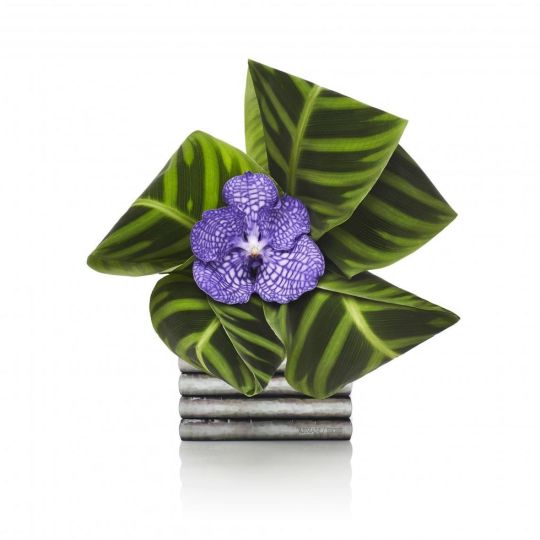
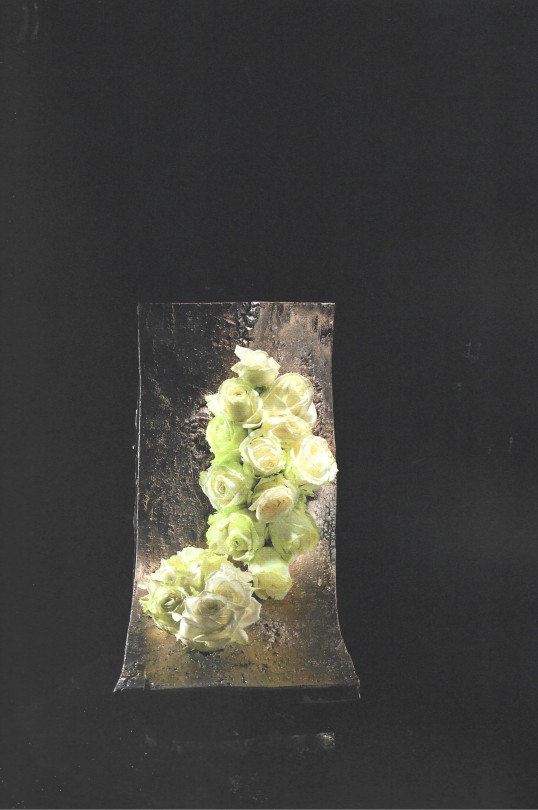


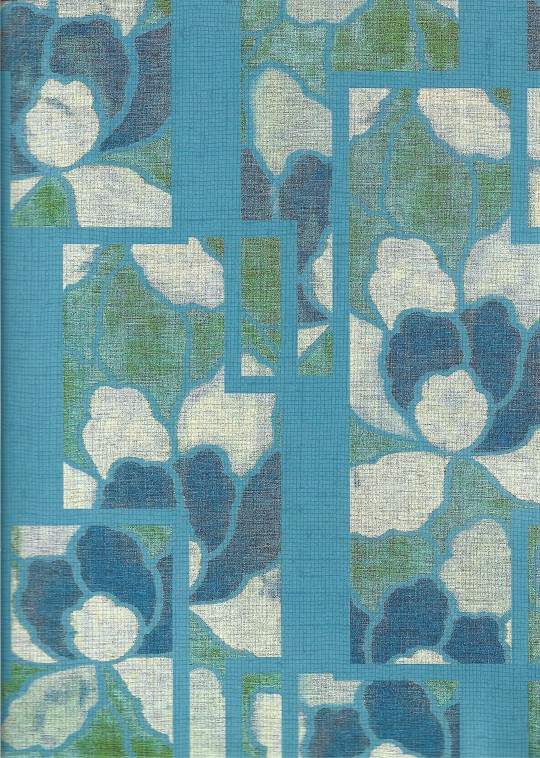

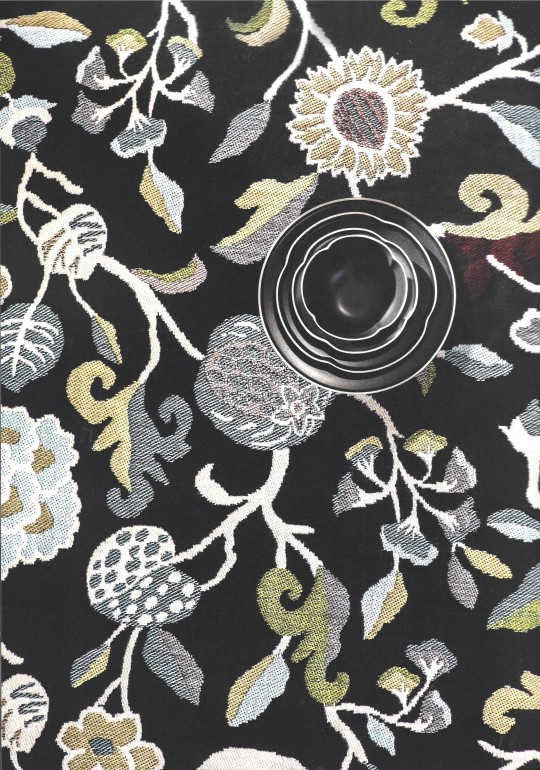
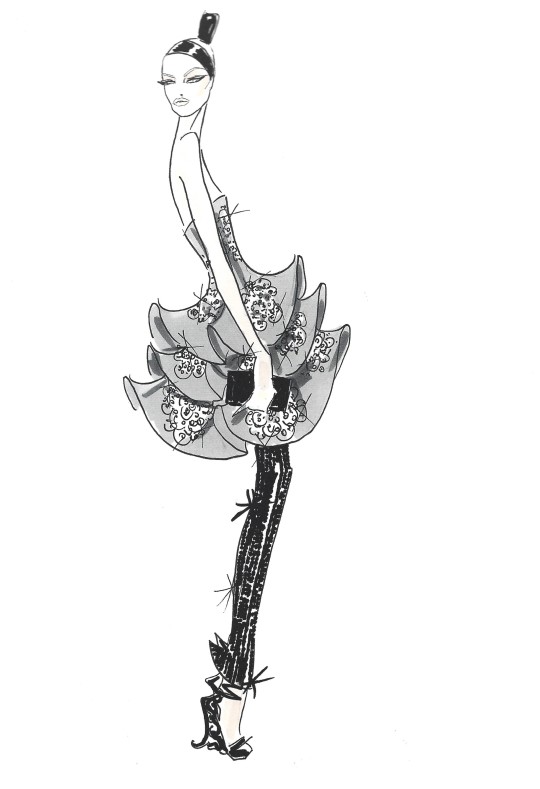

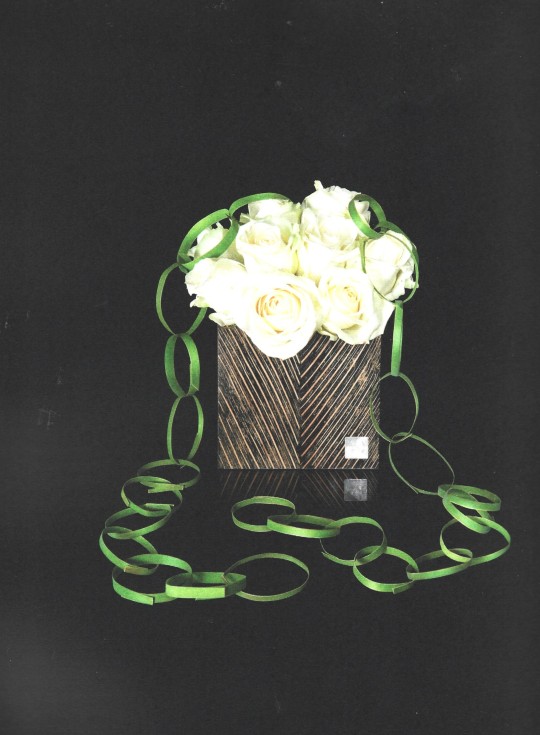

Armani Fiori
Text by Giorgio Armani and Renato Bruni and Harriet Quick and Dan Rubinstein
Rizzoli, New York 2023, 224 pages, Hardcover, 24,8x33cm, ISBN 978-88-918334-2-6
euro 114,00
email if you want to buy [email protected]
This book is an important complement to the Armani style, exploring Giorgio Armani’s touch for flower composition.
Armani is not only a brand, it is a lifestyle: an entire universe that includes fashion apparel and accessories, home furniture, decorative objects, restaurants, beauty, makeup, perfumes, fragrances, skincare, and flowers. The embodiment of style as lifestyle, Armani/Fiori launched in 2000 with the opening of the Armani/Manzoni 31 store, bringing essential taste to the world of flowers and floral decor. Since then, the philosophy behind Armani/Fiori has come to include dedicated boutiques in cities such as Milan, Hong Kong, Kuwait City, and Dubai.
This book marks the twentieth anniversary of the creation of Armani/Fiori and proposes a number of intricately designed bouquets stylishly encased in pure, linear vases and geometric shapes, crafted from precious materials that complement any decor and perfectly match the brand’s fashion and interior design. Armani flower designs include elaborate, one-of-a-kind floral arrangements and decorations for important events, festivities, and anniversaries
30/10/23
#Armani Fiori#Armani/Manzoni 31 2000#flowers#floral decor#Armani style#flowers books#fashion books#fashionbooksmilano
3 notes
·
View notes
Text
I did the thing
1. I am TERRIBLE at watching shows/movies, but I really want to try Love of Kill. I heard it's yandere x yandere. I've been told to try a lot of different ones, though lol
2. My friend bought me some pusheen socks years ago. They make me smile
3. I do like smoothies lol
4. The same black top and pants every time. *body dysmorphia intensifies* i hate dressing up and don't really go out much anyway
5. Eggs a la suisse, but realistically I just make over easy and throw it on toast
6. Any small paper scrap will do, but I prefer digital
7. Black
8. Not anymore, but I used to collect rubber ducks. I still love them. They make me so happy(I want a sleeve tattoo of colored ones!)
9. The smell and sound of rain
10. Not sure how to answer that... color?
11. Glasses, the hipster looking ones lol
12. My best friend is super understanding, accepting, and just hilarious. She's such a great person.
13. Pen
14. Most places outside of home make me uncomfortable
15. Nooooo I'm bad with plants
16. I don't have it anymore, but I used to have a slipknot hoodie from 2009 to like 2015. I wore it so much that it had holes and finally had to toss it. I bought a similar one, but eh. I don't really even listen to slipknot anymore lol
17. Scum Villain shirt
18. I want to see some sort of big natural disaster but, like, in a safe pod thing. Is that possible? XD
19. Pikachu!
20. Trigonometry or algebra. Math and science are my jam! (I kinda sucked at calculus, not gonna lie xD)
21. Not a history person, but I prefer more stylized art in general. Super realistic stuff looks cool but isn't as fun to me. Also I guess that 2000s shoujo anime style is nice. Oh pixel art too! Idk i love so many different ones!
22. Iced!!
23. I would never do that to my gf xD
24. I'd give myself a C. I follow rules but also get anxious easily
25. Ah, the rubber duck one! but yes I have one tattoo. It's on my forearm and literally just says "Death Note" in Japanese. I dont have piercings but love them so much. Gauges! I want those.
26. I make stir fry a lot
27. No, i have bad luck with them falling off :(
28. I swim alright. I love swimming, but the body dysmorphia kinda ruins it haha (I want top surgery but will probably never do it)
29. We just had the plain blocks, not any of the themed ones
30. Lol!!! I mean, kinda. It's all black T shirts and jeans with the exception of like 2 sweaters. Good luck.
31. This one
32. Reeeeaaallllly dark blue. Like so dark it's almost black. ... I miss my black hair days
33. Head phones
34. This confused me, but I guess you don't really see them much anymore. It does make sense that some people may not know how to now. But yeah, I can.
35. As a kid, I had an arctic fox plushie. It looked nothing like Tails from sonic the hedgehog, but that's what I named it. I would spin its tail around so much to make them "fly" that it fell off twice.
36. Ooo, I love air hockey! I think I'm better at foosball though
37. I actually get anxious about it lol!
38. Does Kaito count? XD
39. Saw a lot of fun art today. That made me happy!
40. Weeping willow. They look awesome
41. Fragrance free lol
42. Pjsk. I haven't played it much. I love it, but I just have been on other hobbies lately
43. Huh? 0.0
44. Toss it in a jar that I never use. I pretty much only use my card.
45. No
46. Ethoslab. I don't play Minecraft, but him and his buddies interacting made me smile
47. Love walking, but it involves being around other ppl, so no. I used to go on hikes alone in the woods growing up
48. Nope
49. Sit on the back patio and watch it
50. Semi dark, cold, blanket, rain, doggie and girlfriend nearby. Oooo nice.
50 Questions Just Because
What are three shows in your watchlist that you’ve been meaning to get to?
Describe your favorite pair of socks
Do you like smoothies?
What do you wear when you have to dress nicely?
How do you like your eggs?
What do you use to keep your place when you’re reading a book?
What color dominates your closet?
Do you collect anything? If so, what?
What sounds or scents calm you down?
What’s your favorite kind of uquiz question? (Lyric, color, aesthetic, etc)
Do you wear glasses or contacts?
What’s something about your best friend that you love?
Do you prefer to write in pen or pencil?
What are some places where you feel most at home?
Do you have any houseplants? Do any of them have names?
Describe your favorite hoodie. How long have you had it? What makes it unique?
What’s the last thing you ordered online?
What’s one historical event that you would have liked to have witnessed?
What’s your favorite Halloween costume from when you were a kid?
What kind of math are you best at?
What’s your favorite period in art history, your favorite famous work and/or your favorite style of art? If you don’t know any that’s ok!
Iced or hot drinks?
Which songs do you like to sing in the shower?
Are you a good driver?
Do you have any piercings or tattoos? Are there any that you want?
Can you cook or bake? If so, what are some of your specialties?
Do you have any keychains on your home or car keys? Describe them!
Can you swim very well? Do you like swimming?
Did you play with Legos as a kid? What was your favorite set?
Is your closet organized? If so, how?
What’s the last music video you watched?
If you could dye your hair any color, regardless of how you think it would look, what color would you choose?
Headphones or earbuds?
Can you read analog clocks?
Describe your favorite stuffed animal, either now or from when you were a kid.
What’s an arcade or table game (air hockey, ping pong, etc) that you’re really good at?
Do you mind if others are in the kitchen when you’re cooking or baking?
What’s one show you watch or musician you listen to that your friends know nothing about?
What was the best part of your day today?
What’s your favorite kind of tree?
What scent is your deodorant?
Do you have any games on your phone? If so, which one(s) is/are your favorite?
Do you shower with the lights on or off?
What do you do with spare change?
Do you have good handwriting?
What’s the last thing a friend recommended to you that you looked into and actually liked?
Do you like to go on walks?
Do you have a favorite plate or bowl?
What’s your favorite thing to do when it’s raining?
Describe your perfect sleeping conditions
11K notes
·
View notes
Text
Say Goodbye to Harsh Chemicals – Shop Clean Skin & Pain Care Today

Introduction
We’re not in the early 2000s anymore. Harsh scrubs, stinging creams, and mystery-ingredient pain gels are out. 2025 is Shop All Skin & Pain Care, —and your skin (and body) are begging for the switch.
Whether you’re battling breakouts or body aches, there’s a better way than synthetic overload. It’s time to say goodbye to harsh chemicals—and hello to clean skin and pain care you can actually feel good about.
The Truth About Harsh Chemicals
Common Toxins in Mainstream Skin and Pain Care
You’ll find parabens, phthalates, formaldehyde, synthetic dyes, and artificial fragrances lurking in many popular products. These aren’t just unpronounceable—they’re potentially harmful over time.
Long-Term Effects of Chemical Exposure
From hormone disruption to skin sensitivity, harsh ingredients may cause more harm than healing. And what you put on your skin doesn’t stay there—it gets absorbed.
Why Your Skin Deserves Better
Your skin is your largest organ. Treating it with respect means choosing ingredients that nurture, not damage.
What Does “Clean” Really Mean?
Defining Clean Skincare and Pain Relief
“Clean” means free of toxic ingredients, made with safe, non-irritating elements, and often plant-based or organic.
Natural vs. Synthetic – Not Always Black and White
Not all synthetic ingredients are bad, and not all natural ones are safe. The key is transparency, safety, and testing.
How to Read Ingredient Labels Like a Pro
Look for short ingredient lists, recognizable names (like jojoba or lavender), and clear language—no chemical soup.
The Rise of Clean Living in 2025
Conscious Consumers are Rewriting the Rules
People are asking, “What’s in this?”—and brands are listening. Clean is no longer niche; it’s mainstream wellness.
Eco-Friendly, Cruelty-Free, and Wellness-Driven
The clean movement is about more than skin—it’s about the planet, animals, and holistic health.
From Food to Face Care – The Clean Wave is Global
What started in food has spilled into beauty, pain relief, and home essentials. The clean lifestyle is here to stay.
Why Ditching Chemicals is Good for Your Skin
Restore Your Natural Glow
Without drying alcohols or harsh preservatives, your skin can finally breathe and balance itself.
Support Your Skin Barrier, Don’t Break It
Harsh chemicals strip away oils, weaken your barrier, and invite irritation. Clean care works with your skin, not against it.
Reduce Sensitivity and Inflammation
Many clean formulas are designed to calm, not inflame. Perfect for sensitive, acne-prone, or aging skin.
Clean Pain Relief – Yes, It Exists!
What Makes Pain Relief Oils Clean?
They rely on natural anti-inflammatory agents—like arnica, turmeric, hemp oil, and essential oils—without synthetic fillers.
Plant-Based Power for Muscle and Joint Care
Why mask pain with numbing agents when you can target inflammation and promote healing?
The Difference You’ll Feel (and Smell)
Clean oils aren’t just effective—they smell like nature, not a hospital.
Key Ingredients to Look For
Organic Oils like Jojoba, Almond, and Hemp
These oils mimic your skin’s natural sebum, allowing for deep absorption without clogging pores.
Herbal Heroes like Arnica, Turmeric, and Eucalyptus
Time-tested and scientifically backed, these ingredients are pain relief superstars.
No Parabens, Sulfates, Phthalates, or Synthetics
None of the junk—just clean, skin-loving goodness.
Earth & Elm and ReliefMD – Leaders in Clean Care
What Sets These Brands Apart
Earth & Elm and ReliefMD focus on organic, non-toxic, and effective skin and body solutions—made with integrity.
Bestsellers You Should Try
Earth & Elm Face Beauty Oil – A nutrient-rich glow booster
ReliefMD Foot & Body Pain Relief Oils – Targeted, clean relief where you need it most
Trusted by Thousands, Loved by Skin
With rave reviews and repeat customers, these brands prove that clean can be powerful.
Switching to Clean – What to Expect
The Detox Period is Real
Your skin might react as it adjusts. But that’s normal and temporary.
Results Get Better with Consistency
Stick with it. Clean skincare is a long game—with serious payoff.
Your Skin (and Body) Will Thank You
Less irritation, more glow, and a better relationship with your body.
Clean Packaging, Cleaner Planet
Sustainable Choices Matter
Glass bottles, recyclable materials, and zero-waste refills are more than trends—they’re necessities.
How Brands Are Going Green in 2025
Eco-labeling, plastic-free shipping, and carbon-neutral promises are becoming standard.
The Ripple Effect of Conscious Shopping
Every clean product you buy is a vote for safer, greener business.
Making the Clean Switch Easy
Start With Your Essentials
Replace your daily cleanser, body oil, or pain relief first. Don’t overwhelm yourself.
Build a Minimalist Clean Routine
Simple = sustainable. 3–4 solid products beat a 12-step mess any day.
Subscribe & Save for Hassle-Free Refills
Never run out. Stay consistent. And save while you’re at it.
Clean Care for the Whole Family
Safe for Babies, Teens, and Seniors
Clean skincare and pain relief oils are gentle enough for all ages.
No More Separate Routines for Everyone
One product that works for you, your partner, and even your kids? Yes, please.
One Clean Solution for All Skin Types
Sensitive? Oily? Dry? Clean formulations are designed to balance, not battle.
Final Thoughts
The truth is, your skin (and your health) have put up with a lot. It’s time to break up with harsh chemicals and make a clean commitment—to yourself, your wellness, and your world.
Whether you're treating soreness, soothing your skin, or glowing up your self-care game—clean is the way forward. Make the switch. Shop clean skin and pain care today.
FAQs
1. Are clean products as effective as traditional ones? Absolutely. Many use clinically backed natural ingredients that offer the same—if not better—results.
2. Can I mix clean products with conventional ones? Yes, but for best results, transition to a fully clean routine when possible.
3. How long does it take to see results? Some people see improvements in days, others in weeks. Consistency is key.
4. Are clean pain relief oils safe for daily use? Yes. Most clean oils are gentle enough for daily use, even multiple times a day.
5. Do clean brands cost more? Not always. And with Subscribe & Save options, you actually save more in the long run.
#Oral Care#Skin Oils#Face Beauty Oil - Earth & Elm#Body Beauty Oil - Earth & Elm#Body Pain Relief Oil - ReliefMD#Foot Pain Relief Oil - ReliefMD#Subscribe & Save#Shop All Pain Care#Shop All Skin Care
1 note
·
View note
Photo

Hyacinthus spp. Hyacinths are a perennial, bulbous spring flower from the genus Hyacinthus in the Asparagaceae or asparagus family. Sweetly fragrant with a delicate, fresh scent, each hyacinth bulb produces 4-6 narrow, upright leaves and 1-3 spikes of fragrant star-shaped flowers in colors of blue, lavender, purples, orange, peach, salmon, red, pink, yellow, and white. Winter hardy in zones 4-8, these pretty, perfumed blooms enjoy full or partial sun and typically appear from March to April, growing to a height of 8-12 inches. We link to vendors to help you find relevant products. If you buy from one of our links, we may earn a commission. Native to the eastern Mediterranean basin, Asia Minor, and parts of the Middle East, the Dutch hyacinth, H. orientalis, is the common garden variety –not to be confused with the much smaller flowers of the genus Muscari, known as grape hyacinths. H. orientalis is the single species that gave rise to the extensive range of florists’ hyacinths and garden varieties available today, with cultivated cross-breeding dating back as far as the sixteenth century. Quick Look Common name(s): Hyacinth Plant type: Perennial flowering bulb Hardiness (USDA Zone): 4-8 Native to: Eastern Mediterranean Bloom time / season: Early to mid-spring Exposure: Full to partial sun Soil type: Loamy, well draining Soil pH: 6.0-7.0, slightly acidic to neutral Time to maturity: One season for bulbs; flowers will appear the following spring after fall planting Spacing: 3-5 inches Planting depth: 4-6 inches Mature size: 5-6 inches wide x 6-12 inches high Water Needs: Moderate Taxonomy Family: Asparagaceae Subfamily: Scilloideae Genus: Hyacinthus Species: H. litwinovii, H. orientalis (common, Dutch or garden hyacinth), and H. transcaspicus Cultivars: various Popular throughout antiquity, hyacinths were extensively cultivated in gardens of the Ottoman Empire. The flowers were first introduced to Europe in the mid-1500s when a Flemish diplomat sent home a package of exotic Eastern bulbs from the court of Suleiman the Magnificent. Their appeal quickly caught on, and in the eighteenth century, the first double cultivar was produced – with a single bulb fetching the handsome price of 1000 gold florins! And at one point in the heyday of bulb mania, there were over 2000 varieties of hyacinths available. Today, just over 60 hyacinth cultivars are in commercial production with about half that number available for the home gardener. Now, let’s look at the varieties you should know about in order to get started: Know Your Varieties Singles Full heads of reflexed flowers on a thick stalk are the classic standard for striking displays in the garden, or indoors. Doubles Dense whorls of double-petaled flowers on a stout stalk make a thick mat of colorful blooms. Multifloras Each bulb produces numerous flowering stalks, but flower density is looser, in a more relaxed arrangement. Plantings can be laid out in single colors, two-tones, or multicolored schemes in formal or relaxed arrangements, borders, cast in lawns and under trees, or in containers. How to Grow Hyacinths perform best in moderately fertile soil. They enjoy good drainage, and a full to part-sun location. To enjoy their brilliant colors and fragrance, hyacinths need to be planted in the fall. Here’s what you’ll need to do: Plant approximately 6-8 weeks before the onset of expected hard frosts, or when the soil temperatures in your area start to fall below 60°F. Prepare the growing site by loosening the soil with a fork to a depth of 12-16 inches, then amend with 2-4 inches of organic materials such as mature compost or well-rotted fertilizer. Dig holes approximately 4 inches deep and mix in some bone meal. Set bulbs firmly in place, root end (i.e. widest end) down. Space a minimum of 3 inches apart, in clusters or rows. Cover with soil, firming gently in place. Water thoroughly after planting. Once leaves emerge in spring, sprinkle their bases with a slow-release bulb formula fertilizer with a formula of approximately 5-10-5. Remove blooms once they begin to brown, but allow the leaves to die back on their own. Plant hyacinths in high traffic areas to enjoy their sweet perfume. Container Care Planting in containers is another easy way to enjoy the beauty of hyacinths, either indoors or outside. Try these tips: Use a good potting soil or coconut coir mixed with 1 part compost, 1 part sand, and a sprinkle of bone meal. We like these peat-free coconut coir pellets from Back to the Roots, available on Amazon. Back to the Roots Organic Expanding Soil Ensure a layer of drainage material lines the container bottom – they can’t abide wet feet. Plant 4 inches deep and pack closer together than ground plantings, 1-3 inches apart. Cover with soil, and water to settle bulbs in place. Because they may be susceptible to frost damage, wrap containers with a layer of insulation such as bubble wrap. Set in a sheltered location over winter, and as bulbs begin to swell, unwrap the insulation and move to a sunny site where they can be enjoyed outdoors, or inside on a cool windowsill. As leaves emerge, sprinkle with a slow-release bulb food or a fertilizer with a formula around 3-5-3. Espoma’s 4-pound bag of Bulb-Tone has a 3-5-3 formula, and is available on Amazon. Espoma Organic Bulb-Tone Organic Fertilizer Water regularly before and during blooming, reducing frequency after the flowers fade and leaves begin to die back. After flowers have finished, return the pot to a sheltered spot in the garden. Remove spent flowerheads promptly, but allow leaves to die back on their own. Once all foliage has died, bulbs can be lifted and stored in a cool, dry, and dark location until fall planting. The same can be done with potted hyacinths received as gifts in the springtime. Indoor Forcing Like narcissus, hyacinths can be grown indoors in a soil mix, or simply in a vase of water. To plant in soil, prepare, plant, and care for them as described above, but use smaller containers suitable for indoor spots like windowsills. If your indoor containers lack drainage holes, layer the bottom with bulb fiber. Use prepared bulbs that have been pre-chilled; those that haven’t been prepared this way ahead of time will need 6-10 weeks of cold weather storage in a root cellar, shed, garage, or refrigerator. For storage in a refrigerator, place in a paper bag and tuck into the bottom of the fridge, away from fruits and veggies – the ethane gas that they produce can cause them to grow or develop flowers early. Once chilled, follow the steps outlined above in the section on container plantings. HomArt Recycled Glass Tall Bulb Vase Hyacinths can also be grown in water using a bulb vase. We like this tall one made of recycled glass form HomArt because it keeps the foliage neat. It’s available on Amazon. Place bulbs in the vase, fill with water to just cover the roots, and set in a cool, dark location until a mass of roots forms. Once shoots have grown to 3-4 inches, move to a sunny location and maintain the water level. In just a few weeks, you’ll be enjoying a beautiful flower! Hyacinths grown in water aren’t suitable to go in the garden and should be composted once flowering is finished. To enjoy over the winter holiday season, plant a succession of bulbs every two weeks from the start of September through mid-October. Wondering what to do with your hyacinths once they’ve finished flowering? I’m glad you asked… Cultivars to Select Purchase hyacinths in early autumn at your favorite nursery or seed catalog, or online. Blue Mix This beautiful blend of of white to blue hyacinths would be a great addition to any landscaping endeavor that’s focusing on a cooler color pallet. ‘Blue Mix’ It’s available from Eden Brothers as a pre-order for shipping in the fall in bags of 10, 20, or 50 bulbs. Apricot Passion A rare color for hyacinths, this soft pink cultivar is excellent for containers, borders, and window boxes. ‘Apricot Passion’ It blooms in the mid spring and reaches 8-12 inches tall. This is one of the more fragrant varieties and would make excellent cut flowers to fill your home full of flower powered perfume. In the garden, the scent helps to attract butterflies, bees, and other pollinators. It’s available from Eden Brothers. Purple Sensation The ‘Purple Sensation’ hyacinth is a showy masterpiece of dark purple petals. If you want an eye-catching centerpiece for a spring-flowering mass planting, then this variety is certainly it! ‘Pink Pearl’ The flowers are made up of little florets that curve and merge together to create a spectacular mass of color. Dark purple centers are streaked with baby pink edges which adds texture. It’s available from Burpee for fall planting. Once your order arrives, it’s time to plant! After-Flower Care Garden hyacinths are winter hardy for growing zones 4-8, and can remain underground throughout the year in these zones. But if your winter temperatures remain above 60°F, it’s advisable to dig them up in the autumn and chill them for 6-10 weeks, as outlined in the section on indoor forcing above. Those grown in containers can be transplanted to the garden to re-bloom the following spring. Once the foliage dies back, unearth the bulbs and store until autumn, then plant according to the outline I’ve described in the section on planting preparations. Whether grown in the ground or in pots, remove the spent flowerheads to prevent seeding, but leave the leaves – they’re needed for photosynthesis to store energy and fuel your hyacinth plants for next year. Reduce watering once the leaves begin to die off, but keep your hyacinths moist in dry conditions. In regions with severe winter temperatures or hard spring frosts, a thick 2 to 4-inch layer of protective mulch should be applied and left in place until the danger of frost has passed. Unfortunately, flower quality tends to decline after the initial planting year, which is why many folks treat these plants as a tender perennial, expecting only 2-3 years of robust blooms. The reason their flowers are so spectacular the first year is due to the commercial growers’ precisely controlled, fertile environment and a special post-harvest heat treatment that promotes dense spikes of grand flowers. Since these conditions don’t typically occur in nature, they are difficult for the home gardener to reproduce. Plan to buy more in the fall, or use some of your existing stock to propagate new bulbs. Lifting and Storing For practical reasons, like reusing containers or freeing up prime real estate in the garden, bulbs can be lifted and stored until autumn. But leave in place those that have naturalized under deciduous trees and shrubs, in grassy areas, or that have permanent homes in beds or planters. Once flowers have finished and the foliage has died back, use a garden fork or hand fork to carefully lift and remove them from the soil. Brush clean of soil, trim the roots, and trim or tidy the loose, papery outer layer – known as the “tunic.” Keep only healthy, larger-sized specimens and discard diseased or damaged ones. To prevent the development of fungal rot in storage, lay bulbs on drying racks or trays to air dry for 24-48 hours. Place in paper bags or mesh nets and store in a cool, dry, and dark location until planting time arrives in autumn. It should be noted that all parts of hyacinths are toxic to humans and pets, due to the calcium oxalate and lycorine that they contain. Be sure to keep cats, dogs, horses, and children who like to put things in their mouths away from these. Pests and Disease Just a few pests and diseases may bug these beauties, keeping them from reaching their full potential in the garden. Here’s what to look out for: Basal Rot A fungal disease that can attack in soil temperatures around 65-75°F. Leaf and root growth is stunted, and the bottom of the bulb becomes soft and rotted. Discard any diseased bulbs, and dust bulbs with a fungicide before planting. Don’t replant similar species in the same spot for at least 3 years if basal rot has been detected. Squirrels, Chipmunks, and Other Wildlife Despite being toxic, rodents and other animals still like digging up bulbs! Everything from squirrels and chipmunks to voles and groundhogs – even skunks! – might like digging for these fresh, juicy enticements. To provide some added protection, make tin can sleeves by opening both ends of a can and planting inside the sleeve. Set the bulbs close to the bottom, at about 4 inches, with the rim just below ground level. The open-ended can allows roots to spread while protecting the bulb from gnawing critters. Common Issues Hyacinths are dependable plants known for providing years of fragrant blooms; however, they can sometimes face a few challenges. Frost Injury Leaves and stems can be damaged by late spring frosts, with brown spots and blotches or split, ragged edges. Provide a thick mulch of 2-4 inches over the bulbs after the ground freezes. Pale and Undersized Foliage Hyacinths flourish best in full sunlight, though they can endure partial shade under bare spring branches. Insufficient light can lead to stress, hindering photosynthesis and causing the foliage to become small and pale. Without adequate sunlight, flowering bulbs may cease reproductive growth and fail to produce buds. It’s essential to select a sunny location when planting hyacinths, and, if necessary, relocate them from shaded areas to spots with more sunlight to promote healthy growth. Small or No Flowers As noted above, Hyacinths often produce less vibrant blooms with each passing season, but their lifespan can be extended through proper care and consistent feeding. To maintain a steady supply of flowers, consider propagating new plants by dividing well-established hyacinths. If the plants aren’t happy, they may fail to bloom altogether. If this occurs, we have a troubleshooting guide to help you pinpoint the issue(s). Eastern Treasures With their sweet fragrance and vibrant colors, hyacinths appear like sparkling jewels in the early spring garden. Fantastic in mass plantings, they also dazzle in borders and along pathways, in naturalized settings, and in containers – anywhere their lovely scent can be enjoyed! Remember to save some for indoor forcing. Choose treated bulbs that don’t require an extended chill, or start chilling your own in two-week increments at the start of September to enjoy over the winter months. Do you folks have any questions or favorite ways to use hyacinths? Drop us a note in the comments below, and be sure to check out our article on forcing bulbs for detailed indoor growing instructions. Looking for more spring blooming flower suggestions? Take a gander at some of our other growing guides: © Ask the Experts, LLC. ALL RIGHTS RESERVED. See our TOS for more details. First published March 6th, 2019. Last updated April 14th, 2025. Product photos via Nature Hills Nursery, Eden Brothers, Burpee, Marde Ross & Co., Window Garden, and Dr. Earth, and HomArt. Uncredited photos: Shutterstock. With additional writing and editing by Clare Groom and Allison Sidhu. !function(f,b,e,v,n,t,s) if(f.fbq)return;n=f.fbq=function()n.callMethod? n.callMethod.apply(n,arguments):n.queue.push(arguments); if(!f._fbq)f._fbq=n;n.push=n;n.loaded=!0;n.version='2.0'; n.queue=[];t=b.createElement(e);t.async=!0; t.src=v;s=b.getElementsByTagName(e)[0]; s.parentNode.insertBefore(t,s)(window, document,'script', ' fbq('init', '176410929431717'); fbq('track', 'PageView'); Source link
0 notes
Text

Avon Naturals Spiceberry Pillar Candle
2002
Found on Ebay, user laura0209
#avon#avon naturals#vintage avon#2002#2002 avon#avon naturals spiceberry#avon naturals candle#vintage avon candle#spiceberry#avon pillar candle#pillar candle#spiceberry candle#pink pillar candle#avon naturals spiceberry candle#2000s avon#2000s avon naturals#2000s candle#2000s home fragrance#avon home fragrance#avon candles#pink candle#pink#pink home fragrance
8 notes
·
View notes
Photo

Hyacinthus spp. Hyacinths are a perennial, bulbous spring flower from the genus Hyacinthus in the Asparagaceae or asparagus family. Sweetly fragrant with a delicate, fresh scent, each hyacinth bulb produces 4-6 narrow, upright leaves and 1-3 spikes of fragrant star-shaped flowers in colors of blue, lavender, purples, orange, peach, salmon, red, pink, yellow, and white. Winter hardy in zones 4-8, these pretty, perfumed blooms enjoy full or partial sun and typically appear from March to April, growing to a height of 8-12 inches. We link to vendors to help you find relevant products. If you buy from one of our links, we may earn a commission. Native to the eastern Mediterranean basin, Asia Minor, and parts of the Middle East, the Dutch hyacinth, H. orientalis, is the common garden variety –not to be confused with the much smaller flowers of the genus Muscari, known as grape hyacinths. H. orientalis is the single species that gave rise to the extensive range of florists’ hyacinths and garden varieties available today, with cultivated cross-breeding dating back as far as the sixteenth century. Quick Look Common name(s): Hyacinth Plant type: Perennial flowering bulb Hardiness (USDA Zone): 4-8 Native to: Eastern Mediterranean Bloom time / season: Early to mid-spring Exposure: Full to partial sun Soil type: Loamy, well draining Soil pH: 6.0-7.0, slightly acidic to neutral Time to maturity: One season for bulbs; flowers will appear the following spring after fall planting Spacing: 3-5 inches Planting depth: 4-6 inches Mature size: 5-6 inches wide x 6-12 inches high Water Needs: Moderate Taxonomy Family: Asparagaceae Subfamily: Scilloideae Genus: Hyacinthus Species: H. litwinovii, H. orientalis (common, Dutch or garden hyacinth), and H. transcaspicus Cultivars: various Popular throughout antiquity, hyacinths were extensively cultivated in gardens of the Ottoman Empire. The flowers were first introduced to Europe in the mid-1500s when a Flemish diplomat sent home a package of exotic Eastern bulbs from the court of Suleiman the Magnificent. Their appeal quickly caught on, and in the eighteenth century, the first double cultivar was produced – with a single bulb fetching the handsome price of 1000 gold florins! And at one point in the heyday of bulb mania, there were over 2000 varieties of hyacinths available. Today, just over 60 hyacinth cultivars are in commercial production with about half that number available for the home gardener. Now, let’s look at the varieties you should know about in order to get started: Know Your Varieties Singles Full heads of reflexed flowers on a thick stalk are the classic standard for striking displays in the garden, or indoors. Doubles Dense whorls of double-petaled flowers on a stout stalk make a thick mat of colorful blooms. Multifloras Each bulb produces numerous flowering stalks, but flower density is looser, in a more relaxed arrangement. Plantings can be laid out in single colors, two-tones, or multicolored schemes in formal or relaxed arrangements, borders, cast in lawns and under trees, or in containers. How to Grow Hyacinths perform best in moderately fertile soil. They enjoy good drainage, and a full to part-sun location. To enjoy their brilliant colors and fragrance, hyacinths need to be planted in the fall. Here’s what you’ll need to do: Plant approximately 6-8 weeks before the onset of expected hard frosts, or when the soil temperatures in your area start to fall below 60°F. Prepare the growing site by loosening the soil with a fork to a depth of 12-16 inches, then amend with 2-4 inches of organic materials such as mature compost or well-rotted fertilizer. Dig holes approximately 4 inches deep and mix in some bone meal. Set bulbs firmly in place, root end (i.e. widest end) down. Space a minimum of 3 inches apart, in clusters or rows. Cover with soil, firming gently in place. Water thoroughly after planting. Once leaves emerge in spring, sprinkle their bases with a slow-release bulb formula fertilizer with a formula of approximately 5-10-5. Remove blooms once they begin to brown, but allow the leaves to die back on their own. Plant hyacinths in high traffic areas to enjoy their sweet perfume. Container Care Planting in containers is another easy way to enjoy the beauty of hyacinths, either indoors or outside. Try these tips: Use a good potting soil or coconut coir mixed with 1 part compost, 1 part sand, and a sprinkle of bone meal. We like these peat-free coconut coir pellets from Back to the Roots, available on Amazon. Back to the Roots Organic Expanding Soil Ensure a layer of drainage material lines the container bottom – they can’t abide wet feet. Plant 4 inches deep and pack closer together than ground plantings, 1-3 inches apart. Cover with soil, and water to settle bulbs in place. Because they may be susceptible to frost damage, wrap containers with a layer of insulation such as bubble wrap. Set in a sheltered location over winter, and as bulbs begin to swell, unwrap the insulation and move to a sunny site where they can be enjoyed outdoors, or inside on a cool windowsill. As leaves emerge, sprinkle with a slow-release bulb food or a fertilizer with a formula around 3-5-3. Espoma’s 4-pound bag of Bulb-Tone has a 3-5-3 formula, and is available on Amazon. Espoma Organic Bulb-Tone Organic Fertilizer Water regularly before and during blooming, reducing frequency after the flowers fade and leaves begin to die back. After flowers have finished, return the pot to a sheltered spot in the garden. Remove spent flowerheads promptly, but allow leaves to die back on their own. Once all foliage has died, bulbs can be lifted and stored in a cool, dry, and dark location until fall planting. The same can be done with potted hyacinths received as gifts in the springtime. Indoor Forcing Like narcissus, hyacinths can be grown indoors in a soil mix, or simply in a vase of water. To plant in soil, prepare, plant, and care for them as described above, but use smaller containers suitable for indoor spots like windowsills. If your indoor containers lack drainage holes, layer the bottom with bulb fiber. Use prepared bulbs that have been pre-chilled; those that haven’t been prepared this way ahead of time will need 6-10 weeks of cold weather storage in a root cellar, shed, garage, or refrigerator. For storage in a refrigerator, place in a paper bag and tuck into the bottom of the fridge, away from fruits and veggies – the ethane gas that they produce can cause them to grow or develop flowers early. Once chilled, follow the steps outlined above in the section on container plantings. HomArt Recycled Glass Tall Bulb Vase Hyacinths can also be grown in water using a bulb vase. We like this tall one made of recycled glass form HomArt because it keeps the foliage neat. It’s available on Amazon. Place bulbs in the vase, fill with water to just cover the roots, and set in a cool, dark location until a mass of roots forms. Once shoots have grown to 3-4 inches, move to a sunny location and maintain the water level. In just a few weeks, you’ll be enjoying a beautiful flower! Hyacinths grown in water aren’t suitable to go in the garden and should be composted once flowering is finished. To enjoy over the winter holiday season, plant a succession of bulbs every two weeks from the start of September through mid-October. Wondering what to do with your hyacinths once they’ve finished flowering? I’m glad you asked… Cultivars to Select Purchase hyacinths in early autumn at your favorite nursery or seed catalog, or online. Blue Mix This beautiful blend of of white to blue hyacinths would be a great addition to any landscaping endeavor that’s focusing on a cooler color pallet. ‘Blue Mix’ It’s available from Eden Brothers as a pre-order for shipping in the fall in bags of 10, 20, or 50 bulbs. Apricot Passion A rare color for hyacinths, this soft pink cultivar is excellent for containers, borders, and window boxes. ‘Apricot Passion’ It blooms in the mid spring and reaches 8-12 inches tall. This is one of the more fragrant varieties and would make excellent cut flowers to fill your home full of flower powered perfume. In the garden, the scent helps to attract butterflies, bees, and other pollinators. It’s available from Eden Brothers. Purple Sensation The ‘Purple Sensation’ hyacinth is a showy masterpiece of dark purple petals. If you want an eye-catching centerpiece for a spring-flowering mass planting, then this variety is certainly it! ‘Pink Pearl’ The flowers are made up of little florets that curve and merge together to create a spectacular mass of color. Dark purple centers are streaked with baby pink edges which adds texture. It’s available from Burpee for fall planting. Once your order arrives, it’s time to plant! After-Flower Care Garden hyacinths are winter hardy for growing zones 4-8, and can remain underground throughout the year in these zones. But if your winter temperatures remain above 60°F, it’s advisable to dig them up in the autumn and chill them for 6-10 weeks, as outlined in the section on indoor forcing above. Those grown in containers can be transplanted to the garden to re-bloom the following spring. Once the foliage dies back, unearth the bulbs and store until autumn, then plant according to the outline I’ve described in the section on planting preparations. Whether grown in the ground or in pots, remove the spent flowerheads to prevent seeding, but leave the leaves – they’re needed for photosynthesis to store energy and fuel your hyacinth plants for next year. Reduce watering once the leaves begin to die off, but keep your hyacinths moist in dry conditions. In regions with severe winter temperatures or hard spring frosts, a thick 2 to 4-inch layer of protective mulch should be applied and left in place until the danger of frost has passed. Unfortunately, flower quality tends to decline after the initial planting year, which is why many folks treat these plants as a tender perennial, expecting only 2-3 years of robust blooms. The reason their flowers are so spectacular the first year is due to the commercial growers’ precisely controlled, fertile environment and a special post-harvest heat treatment that promotes dense spikes of grand flowers. Since these conditions don’t typically occur in nature, they are difficult for the home gardener to reproduce. Plan to buy more in the fall, or use some of your existing stock to propagate new bulbs. Lifting and Storing For practical reasons, like reusing containers or freeing up prime real estate in the garden, bulbs can be lifted and stored until autumn. But leave in place those that have naturalized under deciduous trees and shrubs, in grassy areas, or that have permanent homes in beds or planters. Once flowers have finished and the foliage has died back, use a garden fork or hand fork to carefully lift and remove them from the soil. Brush clean of soil, trim the roots, and trim or tidy the loose, papery outer layer – known as the “tunic.” Keep only healthy, larger-sized specimens and discard diseased or damaged ones. To prevent the development of fungal rot in storage, lay bulbs on drying racks or trays to air dry for 24-48 hours. Place in paper bags or mesh nets and store in a cool, dry, and dark location until planting time arrives in autumn. It should be noted that all parts of hyacinths are toxic to humans and pets, due to the calcium oxalate and lycorine that they contain. Be sure to keep cats, dogs, horses, and children who like to put things in their mouths away from these. Pests and Disease Just a few pests and diseases may bug these beauties, keeping them from reaching their full potential in the garden. Here’s what to look out for: Basal Rot A fungal disease that can attack in soil temperatures around 65-75°F. Leaf and root growth is stunted, and the bottom of the bulb becomes soft and rotted. Discard any diseased bulbs, and dust bulbs with a fungicide before planting. Don’t replant similar species in the same spot for at least 3 years if basal rot has been detected. Squirrels, Chipmunks, and Other Wildlife Despite being toxic, rodents and other animals still like digging up bulbs! Everything from squirrels and chipmunks to voles and groundhogs – even skunks! – might like digging for these fresh, juicy enticements. To provide some added protection, make tin can sleeves by opening both ends of a can and planting inside the sleeve. Set the bulbs close to the bottom, at about 4 inches, with the rim just below ground level. The open-ended can allows roots to spread while protecting the bulb from gnawing critters. Common Issues Hyacinths are dependable plants known for providing years of fragrant blooms; however, they can sometimes face a few challenges. Frost Injury Leaves and stems can be damaged by late spring frosts, with brown spots and blotches or split, ragged edges. Provide a thick mulch of 2-4 inches over the bulbs after the ground freezes. Pale and Undersized Foliage Hyacinths flourish best in full sunlight, though they can endure partial shade under bare spring branches. Insufficient light can lead to stress, hindering photosynthesis and causing the foliage to become small and pale. Without adequate sunlight, flowering bulbs may cease reproductive growth and fail to produce buds. It’s essential to select a sunny location when planting hyacinths, and, if necessary, relocate them from shaded areas to spots with more sunlight to promote healthy growth. Small or No Flowers As noted above, Hyacinths often produce less vibrant blooms with each passing season, but their lifespan can be extended through proper care and consistent feeding. To maintain a steady supply of flowers, consider propagating new plants by dividing well-established hyacinths. If the plants aren’t happy, they may fail to bloom altogether. If this occurs, we have a troubleshooting guide to help you pinpoint the issue(s). Eastern Treasures With their sweet fragrance and vibrant colors, hyacinths appear like sparkling jewels in the early spring garden. Fantastic in mass plantings, they also dazzle in borders and along pathways, in naturalized settings, and in containers – anywhere their lovely scent can be enjoyed! Remember to save some for indoor forcing. Choose treated bulbs that don’t require an extended chill, or start chilling your own in two-week increments at the start of September to enjoy over the winter months. Do you folks have any questions or favorite ways to use hyacinths? Drop us a note in the comments below, and be sure to check out our article on forcing bulbs for detailed indoor growing instructions. Looking for more spring blooming flower suggestions? Take a gander at some of our other growing guides: © Ask the Experts, LLC. ALL RIGHTS RESERVED. See our TOS for more details. First published March 6th, 2019. Last updated April 14th, 2025. Product photos via Nature Hills Nursery, Eden Brothers, Burpee, Marde Ross & Co., Window Garden, and Dr. Earth, and HomArt. Uncredited photos: Shutterstock. With additional writing and editing by Clare Groom and Allison Sidhu. !function(f,b,e,v,n,t,s) if(f.fbq)return;n=f.fbq=function()n.callMethod? n.callMethod.apply(n,arguments):n.queue.push(arguments); if(!f._fbq)f._fbq=n;n.push=n;n.loaded=!0;n.version='2.0'; n.queue=[];t=b.createElement(e);t.async=!0; t.src=v;s=b.getElementsByTagName(e)[0]; s.parentNode.insertBefore(t,s)(window, document,'script', ' fbq('init', '176410929431717'); fbq('track', 'PageView'); Source link
1 note
·
View note
Photo

Hyacinthus spp. Hyacinths are a perennial, bulbous spring flower from the genus Hyacinthus in the Asparagaceae or asparagus family. Sweetly fragrant with a delicate, fresh scent, each hyacinth bulb produces 4-6 narrow, upright leaves and 1-3 spikes of fragrant star-shaped flowers in colors of blue, lavender, purples, orange, peach, salmon, red, pink, yellow, and white. Winter hardy in zones 4-8, these pretty, perfumed blooms enjoy full or partial sun and typically appear from March to April, growing to a height of 8-12 inches. We link to vendors to help you find relevant products. If you buy from one of our links, we may earn a commission. Native to the eastern Mediterranean basin, Asia Minor, and parts of the Middle East, the Dutch hyacinth, H. orientalis, is the common garden variety –not to be confused with the much smaller flowers of the genus Muscari, known as grape hyacinths. H. orientalis is the single species that gave rise to the extensive range of florists’ hyacinths and garden varieties available today, with cultivated cross-breeding dating back as far as the sixteenth century. Quick Look Common name(s): Hyacinth Plant type: Perennial flowering bulb Hardiness (USDA Zone): 4-8 Native to: Eastern Mediterranean Bloom time / season: Early to mid-spring Exposure: Full to partial sun Soil type: Loamy, well draining Soil pH: 6.0-7.0, slightly acidic to neutral Time to maturity: One season for bulbs; flowers will appear the following spring after fall planting Spacing: 3-5 inches Planting depth: 4-6 inches Mature size: 5-6 inches wide x 6-12 inches high Water Needs: Moderate Taxonomy Family: Asparagaceae Subfamily: Scilloideae Genus: Hyacinthus Species: H. litwinovii, H. orientalis (common, Dutch or garden hyacinth), and H. transcaspicus Cultivars: various Popular throughout antiquity, hyacinths were extensively cultivated in gardens of the Ottoman Empire. The flowers were first introduced to Europe in the mid-1500s when a Flemish diplomat sent home a package of exotic Eastern bulbs from the court of Suleiman the Magnificent. Their appeal quickly caught on, and in the eighteenth century, the first double cultivar was produced – with a single bulb fetching the handsome price of 1000 gold florins! And at one point in the heyday of bulb mania, there were over 2000 varieties of hyacinths available. Today, just over 60 hyacinth cultivars are in commercial production with about half that number available for the home gardener. Now, let’s look at the varieties you should know about in order to get started: Know Your Varieties Singles Full heads of reflexed flowers on a thick stalk are the classic standard for striking displays in the garden, or indoors. Doubles Dense whorls of double-petaled flowers on a stout stalk make a thick mat of colorful blooms. Multifloras Each bulb produces numerous flowering stalks, but flower density is looser, in a more relaxed arrangement. Plantings can be laid out in single colors, two-tones, or multicolored schemes in formal or relaxed arrangements, borders, cast in lawns and under trees, or in containers. How to Grow Hyacinths perform best in moderately fertile soil. They enjoy good drainage, and a full to part-sun location. To enjoy their brilliant colors and fragrance, hyacinths need to be planted in the fall. Here’s what you’ll need to do: Plant approximately 6-8 weeks before the onset of expected hard frosts, or when the soil temperatures in your area start to fall below 60°F. Prepare the growing site by loosening the soil with a fork to a depth of 12-16 inches, then amend with 2-4 inches of organic materials such as mature compost or well-rotted fertilizer. Dig holes approximately 4 inches deep and mix in some bone meal. Set bulbs firmly in place, root end (i.e. widest end) down. Space a minimum of 3 inches apart, in clusters or rows. Cover with soil, firming gently in place. Water thoroughly after planting. Once leaves emerge in spring, sprinkle their bases with a slow-release bulb formula fertilizer with a formula of approximately 5-10-5. Remove blooms once they begin to brown, but allow the leaves to die back on their own. Plant hyacinths in high traffic areas to enjoy their sweet perfume. Container Care Planting in containers is another easy way to enjoy the beauty of hyacinths, either indoors or outside. Try these tips: Use a good potting soil or coconut coir mixed with 1 part compost, 1 part sand, and a sprinkle of bone meal. We like these peat-free coconut coir pellets from Back to the Roots, available on Amazon. Back to the Roots Organic Expanding Soil Ensure a layer of drainage material lines the container bottom – they can’t abide wet feet. Plant 4 inches deep and pack closer together than ground plantings, 1-3 inches apart. Cover with soil, and water to settle bulbs in place. Because they may be susceptible to frost damage, wrap containers with a layer of insulation such as bubble wrap. Set in a sheltered location over winter, and as bulbs begin to swell, unwrap the insulation and move to a sunny site where they can be enjoyed outdoors, or inside on a cool windowsill. As leaves emerge, sprinkle with a slow-release bulb food or a fertilizer with a formula around 3-5-3. Espoma’s 4-pound bag of Bulb-Tone has a 3-5-3 formula, and is available on Amazon. Espoma Organic Bulb-Tone Organic Fertilizer Water regularly before and during blooming, reducing frequency after the flowers fade and leaves begin to die back. After flowers have finished, return the pot to a sheltered spot in the garden. Remove spent flowerheads promptly, but allow leaves to die back on their own. Once all foliage has died, bulbs can be lifted and stored in a cool, dry, and dark location until fall planting. The same can be done with potted hyacinths received as gifts in the springtime. Indoor Forcing Like narcissus, hyacinths can be grown indoors in a soil mix, or simply in a vase of water. To plant in soil, prepare, plant, and care for them as described above, but use smaller containers suitable for indoor spots like windowsills. If your indoor containers lack drainage holes, layer the bottom with bulb fiber. Use prepared bulbs that have been pre-chilled; those that haven’t been prepared this way ahead of time will need 6-10 weeks of cold weather storage in a root cellar, shed, garage, or refrigerator. For storage in a refrigerator, place in a paper bag and tuck into the bottom of the fridge, away from fruits and veggies – the ethane gas that they produce can cause them to grow or develop flowers early. Once chilled, follow the steps outlined above in the section on container plantings. HomArt Recycled Glass Tall Bulb Vase Hyacinths can also be grown in water using a bulb vase. We like this tall one made of recycled glass form HomArt because it keeps the foliage neat. It’s available on Amazon. Place bulbs in the vase, fill with water to just cover the roots, and set in a cool, dark location until a mass of roots forms. Once shoots have grown to 3-4 inches, move to a sunny location and maintain the water level. In just a few weeks, you’ll be enjoying a beautiful flower! Hyacinths grown in water aren’t suitable to go in the garden and should be composted once flowering is finished. To enjoy over the winter holiday season, plant a succession of bulbs every two weeks from the start of September through mid-October. Wondering what to do with your hyacinths once they’ve finished flowering? I’m glad you asked… Cultivars to Select Purchase hyacinths in early autumn at your favorite nursery or seed catalog, or online. Blue Mix This beautiful blend of of white to blue hyacinths would be a great addition to any landscaping endeavor that’s focusing on a cooler color pallet. ‘Blue Mix’ It’s available from Eden Brothers as a pre-order for shipping in the fall in bags of 10, 20, or 50 bulbs. Apricot Passion A rare color for hyacinths, this soft pink cultivar is excellent for containers, borders, and window boxes. ‘Apricot Passion’ It blooms in the mid spring and reaches 8-12 inches tall. This is one of the more fragrant varieties and would make excellent cut flowers to fill your home full of flower powered perfume. In the garden, the scent helps to attract butterflies, bees, and other pollinators. It’s available from Eden Brothers. Purple Sensation The ‘Purple Sensation’ hyacinth is a showy masterpiece of dark purple petals. If you want an eye-catching centerpiece for a spring-flowering mass planting, then this variety is certainly it! ‘Pink Pearl’ The flowers are made up of little florets that curve and merge together to create a spectacular mass of color. Dark purple centers are streaked with baby pink edges which adds texture. It’s available from Burpee for fall planting. Once your order arrives, it’s time to plant! After-Flower Care Garden hyacinths are winter hardy for growing zones 4-8, and can remain underground throughout the year in these zones. But if your winter temperatures remain above 60°F, it’s advisable to dig them up in the autumn and chill them for 6-10 weeks, as outlined in the section on indoor forcing above. Those grown in containers can be transplanted to the garden to re-bloom the following spring. Once the foliage dies back, unearth the bulbs and store until autumn, then plant according to the outline I’ve described in the section on planting preparations. Whether grown in the ground or in pots, remove the spent flowerheads to prevent seeding, but leave the leaves – they’re needed for photosynthesis to store energy and fuel your hyacinth plants for next year. Reduce watering once the leaves begin to die off, but keep your hyacinths moist in dry conditions. In regions with severe winter temperatures or hard spring frosts, a thick 2 to 4-inch layer of protective mulch should be applied and left in place until the danger of frost has passed. Unfortunately, flower quality tends to decline after the initial planting year, which is why many folks treat these plants as a tender perennial, expecting only 2-3 years of robust blooms. The reason their flowers are so spectacular the first year is due to the commercial growers’ precisely controlled, fertile environment and a special post-harvest heat treatment that promotes dense spikes of grand flowers. Since these conditions don’t typically occur in nature, they are difficult for the home gardener to reproduce. Plan to buy more in the fall, or use some of your existing stock to propagate new bulbs. Lifting and Storing For practical reasons, like reusing containers or freeing up prime real estate in the garden, bulbs can be lifted and stored until autumn. But leave in place those that have naturalized under deciduous trees and shrubs, in grassy areas, or that have permanent homes in beds or planters. Once flowers have finished and the foliage has died back, use a garden fork or hand fork to carefully lift and remove them from the soil. Brush clean of soil, trim the roots, and trim or tidy the loose, papery outer layer – known as the “tunic.” Keep only healthy, larger-sized specimens and discard diseased or damaged ones. To prevent the development of fungal rot in storage, lay bulbs on drying racks or trays to air dry for 24-48 hours. Place in paper bags or mesh nets and store in a cool, dry, and dark location until planting time arrives in autumn. It should be noted that all parts of hyacinths are toxic to humans and pets, due to the calcium oxalate and lycorine that they contain. Be sure to keep cats, dogs, horses, and children who like to put things in their mouths away from these. Pests and Disease Just a few pests and diseases may bug these beauties, keeping them from reaching their full potential in the garden. Here’s what to look out for: Basal Rot A fungal disease that can attack in soil temperatures around 65-75°F. Leaf and root growth is stunted, and the bottom of the bulb becomes soft and rotted. Discard any diseased bulbs, and dust bulbs with a fungicide before planting. Don’t replant similar species in the same spot for at least 3 years if basal rot has been detected. Squirrels, Chipmunks, and Other Wildlife Despite being toxic, rodents and other animals still like digging up bulbs! Everything from squirrels and chipmunks to voles and groundhogs – even skunks! – might like digging for these fresh, juicy enticements. To provide some added protection, make tin can sleeves by opening both ends of a can and planting inside the sleeve. Set the bulbs close to the bottom, at about 4 inches, with the rim just below ground level. The open-ended can allows roots to spread while protecting the bulb from gnawing critters. Common Issues Hyacinths are dependable plants known for providing years of fragrant blooms; however, they can sometimes face a few challenges. Frost Injury Leaves and stems can be damaged by late spring frosts, with brown spots and blotches or split, ragged edges. Provide a thick mulch of 2-4 inches over the bulbs after the ground freezes. Pale and Undersized Foliage Hyacinths flourish best in full sunlight, though they can endure partial shade under bare spring branches. Insufficient light can lead to stress, hindering photosynthesis and causing the foliage to become small and pale. Without adequate sunlight, flowering bulbs may cease reproductive growth and fail to produce buds. It’s essential to select a sunny location when planting hyacinths, and, if necessary, relocate them from shaded areas to spots with more sunlight to promote healthy growth. Small or No Flowers As noted above, Hyacinths often produce less vibrant blooms with each passing season, but their lifespan can be extended through proper care and consistent feeding. To maintain a steady supply of flowers, consider propagating new plants by dividing well-established hyacinths. If the plants aren’t happy, they may fail to bloom altogether. If this occurs, we have a troubleshooting guide to help you pinpoint the issue(s). Eastern Treasures With their sweet fragrance and vibrant colors, hyacinths appear like sparkling jewels in the early spring garden. Fantastic in mass plantings, they also dazzle in borders and along pathways, in naturalized settings, and in containers – anywhere their lovely scent can be enjoyed! Remember to save some for indoor forcing. Choose treated bulbs that don’t require an extended chill, or start chilling your own in two-week increments at the start of September to enjoy over the winter months. Do you folks have any questions or favorite ways to use hyacinths? Drop us a note in the comments below, and be sure to check out our article on forcing bulbs for detailed indoor growing instructions. Looking for more spring blooming flower suggestions? Take a gander at some of our other growing guides: © Ask the Experts, LLC. ALL RIGHTS RESERVED. See our TOS for more details. First published March 6th, 2019. Last updated April 14th, 2025. Product photos via Nature Hills Nursery, Eden Brothers, Burpee, Marde Ross & Co., Window Garden, and Dr. Earth, and HomArt. Uncredited photos: Shutterstock. With additional writing and editing by Clare Groom and Allison Sidhu. !function(f,b,e,v,n,t,s) if(f.fbq)return;n=f.fbq=function()n.callMethod? n.callMethod.apply(n,arguments):n.queue.push(arguments); if(!f._fbq)f._fbq=n;n.push=n;n.loaded=!0;n.version='2.0'; n.queue=[];t=b.createElement(e);t.async=!0; t.src=v;s=b.getElementsByTagName(e)[0]; s.parentNode.insertBefore(t,s)(window, document,'script', ' fbq('init', '176410929431717'); fbq('track', 'PageView'); Source link
0 notes
Photo

Hyacinthus spp. Hyacinths are a perennial, bulbous spring flower from the genus Hyacinthus in the Asparagaceae or asparagus family. Sweetly fragrant with a delicate, fresh scent, each hyacinth bulb produces 4-6 narrow, upright leaves and 1-3 spikes of fragrant star-shaped flowers in colors of blue, lavender, purples, orange, peach, salmon, red, pink, yellow, and white. Winter hardy in zones 4-8, these pretty, perfumed blooms enjoy full or partial sun and typically appear from March to April, growing to a height of 8-12 inches. We link to vendors to help you find relevant products. If you buy from one of our links, we may earn a commission. Native to the eastern Mediterranean basin, Asia Minor, and parts of the Middle East, the Dutch hyacinth, H. orientalis, is the common garden variety –not to be confused with the much smaller flowers of the genus Muscari, known as grape hyacinths. H. orientalis is the single species that gave rise to the extensive range of florists’ hyacinths and garden varieties available today, with cultivated cross-breeding dating back as far as the sixteenth century. Quick Look Common name(s): Hyacinth Plant type: Perennial flowering bulb Hardiness (USDA Zone): 4-8 Native to: Eastern Mediterranean Bloom time / season: Early to mid-spring Exposure: Full to partial sun Soil type: Loamy, well draining Soil pH: 6.0-7.0, slightly acidic to neutral Time to maturity: One season for bulbs; flowers will appear the following spring after fall planting Spacing: 3-5 inches Planting depth: 4-6 inches Mature size: 5-6 inches wide x 6-12 inches high Water Needs: Moderate Taxonomy Family: Asparagaceae Subfamily: Scilloideae Genus: Hyacinthus Species: H. litwinovii, H. orientalis (common, Dutch or garden hyacinth), and H. transcaspicus Cultivars: various Popular throughout antiquity, hyacinths were extensively cultivated in gardens of the Ottoman Empire. The flowers were first introduced to Europe in the mid-1500s when a Flemish diplomat sent home a package of exotic Eastern bulbs from the court of Suleiman the Magnificent. Their appeal quickly caught on, and in the eighteenth century, the first double cultivar was produced – with a single bulb fetching the handsome price of 1000 gold florins! And at one point in the heyday of bulb mania, there were over 2000 varieties of hyacinths available. Today, just over 60 hyacinth cultivars are in commercial production with about half that number available for the home gardener. Now, let’s look at the varieties you should know about in order to get started: Know Your Varieties Singles Full heads of reflexed flowers on a thick stalk are the classic standard for striking displays in the garden, or indoors. Doubles Dense whorls of double-petaled flowers on a stout stalk make a thick mat of colorful blooms. Multifloras Each bulb produces numerous flowering stalks, but flower density is looser, in a more relaxed arrangement. Plantings can be laid out in single colors, two-tones, or multicolored schemes in formal or relaxed arrangements, borders, cast in lawns and under trees, or in containers. How to Grow Hyacinths perform best in moderately fertile soil. They enjoy good drainage, and a full to part-sun location. To enjoy their brilliant colors and fragrance, hyacinths need to be planted in the fall. Here’s what you’ll need to do: Plant approximately 6-8 weeks before the onset of expected hard frosts, or when the soil temperatures in your area start to fall below 60°F. Prepare the growing site by loosening the soil with a fork to a depth of 12-16 inches, then amend with 2-4 inches of organic materials such as mature compost or well-rotted fertilizer. Dig holes approximately 4 inches deep and mix in some bone meal. Set bulbs firmly in place, root end (i.e. widest end) down. Space a minimum of 3 inches apart, in clusters or rows. Cover with soil, firming gently in place. Water thoroughly after planting. Once leaves emerge in spring, sprinkle their bases with a slow-release bulb formula fertilizer with a formula of approximately 5-10-5. Remove blooms once they begin to brown, but allow the leaves to die back on their own. Plant hyacinths in high traffic areas to enjoy their sweet perfume. Container Care Planting in containers is another easy way to enjoy the beauty of hyacinths, either indoors or outside. Try these tips: Use a good potting soil or coconut coir mixed with 1 part compost, 1 part sand, and a sprinkle of bone meal. We like these peat-free coconut coir pellets from Back to the Roots, available on Amazon. Back to the Roots Organic Expanding Soil Ensure a layer of drainage material lines the container bottom – they can’t abide wet feet. Plant 4 inches deep and pack closer together than ground plantings, 1-3 inches apart. Cover with soil, and water to settle bulbs in place. Because they may be susceptible to frost damage, wrap containers with a layer of insulation such as bubble wrap. Set in a sheltered location over winter, and as bulbs begin to swell, unwrap the insulation and move to a sunny site where they can be enjoyed outdoors, or inside on a cool windowsill. As leaves emerge, sprinkle with a slow-release bulb food or a fertilizer with a formula around 3-5-3. Espoma’s 4-pound bag of Bulb-Tone has a 3-5-3 formula, and is available on Amazon. Espoma Organic Bulb-Tone Organic Fertilizer Water regularly before and during blooming, reducing frequency after the flowers fade and leaves begin to die back. After flowers have finished, return the pot to a sheltered spot in the garden. Remove spent flowerheads promptly, but allow leaves to die back on their own. Once all foliage has died, bulbs can be lifted and stored in a cool, dry, and dark location until fall planting. The same can be done with potted hyacinths received as gifts in the springtime. Indoor Forcing Like narcissus, hyacinths can be grown indoors in a soil mix, or simply in a vase of water. To plant in soil, prepare, plant, and care for them as described above, but use smaller containers suitable for indoor spots like windowsills. If your indoor containers lack drainage holes, layer the bottom with bulb fiber. Use prepared bulbs that have been pre-chilled; those that haven’t been prepared this way ahead of time will need 6-10 weeks of cold weather storage in a root cellar, shed, garage, or refrigerator. For storage in a refrigerator, place in a paper bag and tuck into the bottom of the fridge, away from fruits and veggies – the ethane gas that they produce can cause them to grow or develop flowers early. Once chilled, follow the steps outlined above in the section on container plantings. HomArt Recycled Glass Tall Bulb Vase Hyacinths can also be grown in water using a bulb vase. We like this tall one made of recycled glass form HomArt because it keeps the foliage neat. It’s available on Amazon. Place bulbs in the vase, fill with water to just cover the roots, and set in a cool, dark location until a mass of roots forms. Once shoots have grown to 3-4 inches, move to a sunny location and maintain the water level. In just a few weeks, you’ll be enjoying a beautiful flower! Hyacinths grown in water aren’t suitable to go in the garden and should be composted once flowering is finished. To enjoy over the winter holiday season, plant a succession of bulbs every two weeks from the start of September through mid-October. Wondering what to do with your hyacinths once they’ve finished flowering? I’m glad you asked… Cultivars to Select Purchase hyacinths in early autumn at your favorite nursery or seed catalog, or online. Blue Mix This beautiful blend of of white to blue hyacinths would be a great addition to any landscaping endeavor that’s focusing on a cooler color pallet. ‘Blue Mix’ It’s available from Eden Brothers as a pre-order for shipping in the fall in bags of 10, 20, or 50 bulbs. Apricot Passion A rare color for hyacinths, this soft pink cultivar is excellent for containers, borders, and window boxes. ‘Apricot Passion’ It blooms in the mid spring and reaches 8-12 inches tall. This is one of the more fragrant varieties and would make excellent cut flowers to fill your home full of flower powered perfume. In the garden, the scent helps to attract butterflies, bees, and other pollinators. It’s available from Eden Brothers. Purple Sensation The ‘Purple Sensation’ hyacinth is a showy masterpiece of dark purple petals. If you want an eye-catching centerpiece for a spring-flowering mass planting, then this variety is certainly it! ‘Pink Pearl’ The flowers are made up of little florets that curve and merge together to create a spectacular mass of color. Dark purple centers are streaked with baby pink edges which adds texture. It’s available from Burpee for fall planting. Once your order arrives, it’s time to plant! After-Flower Care Garden hyacinths are winter hardy for growing zones 4-8, and can remain underground throughout the year in these zones. But if your winter temperatures remain above 60°F, it’s advisable to dig them up in the autumn and chill them for 6-10 weeks, as outlined in the section on indoor forcing above. Those grown in containers can be transplanted to the garden to re-bloom the following spring. Once the foliage dies back, unearth the bulbs and store until autumn, then plant according to the outline I’ve described in the section on planting preparations. Whether grown in the ground or in pots, remove the spent flowerheads to prevent seeding, but leave the leaves – they’re needed for photosynthesis to store energy and fuel your hyacinth plants for next year. Reduce watering once the leaves begin to die off, but keep your hyacinths moist in dry conditions. In regions with severe winter temperatures or hard spring frosts, a thick 2 to 4-inch layer of protective mulch should be applied and left in place until the danger of frost has passed. Unfortunately, flower quality tends to decline after the initial planting year, which is why many folks treat these plants as a tender perennial, expecting only 2-3 years of robust blooms. The reason their flowers are so spectacular the first year is due to the commercial growers’ precisely controlled, fertile environment and a special post-harvest heat treatment that promotes dense spikes of grand flowers. Since these conditions don’t typically occur in nature, they are difficult for the home gardener to reproduce. Plan to buy more in the fall, or use some of your existing stock to propagate new bulbs. Lifting and Storing For practical reasons, like reusing containers or freeing up prime real estate in the garden, bulbs can be lifted and stored until autumn. But leave in place those that have naturalized under deciduous trees and shrubs, in grassy areas, or that have permanent homes in beds or planters. Once flowers have finished and the foliage has died back, use a garden fork or hand fork to carefully lift and remove them from the soil. Brush clean of soil, trim the roots, and trim or tidy the loose, papery outer layer – known as the “tunic.” Keep only healthy, larger-sized specimens and discard diseased or damaged ones. To prevent the development of fungal rot in storage, lay bulbs on drying racks or trays to air dry for 24-48 hours. Place in paper bags or mesh nets and store in a cool, dry, and dark location until planting time arrives in autumn. It should be noted that all parts of hyacinths are toxic to humans and pets, due to the calcium oxalate and lycorine that they contain. Be sure to keep cats, dogs, horses, and children who like to put things in their mouths away from these. Pests and Disease Just a few pests and diseases may bug these beauties, keeping them from reaching their full potential in the garden. Here’s what to look out for: Basal Rot A fungal disease that can attack in soil temperatures around 65-75°F. Leaf and root growth is stunted, and the bottom of the bulb becomes soft and rotted. Discard any diseased bulbs, and dust bulbs with a fungicide before planting. Don’t replant similar species in the same spot for at least 3 years if basal rot has been detected. Squirrels, Chipmunks, and Other Wildlife Despite being toxic, rodents and other animals still like digging up bulbs! Everything from squirrels and chipmunks to voles and groundhogs – even skunks! – might like digging for these fresh, juicy enticements. To provide some added protection, make tin can sleeves by opening both ends of a can and planting inside the sleeve. Set the bulbs close to the bottom, at about 4 inches, with the rim just below ground level. The open-ended can allows roots to spread while protecting the bulb from gnawing critters. Common Issues Hyacinths are dependable plants known for providing years of fragrant blooms; however, they can sometimes face a few challenges. Frost Injury Leaves and stems can be damaged by late spring frosts, with brown spots and blotches or split, ragged edges. Provide a thick mulch of 2-4 inches over the bulbs after the ground freezes. Pale and Undersized Foliage Hyacinths flourish best in full sunlight, though they can endure partial shade under bare spring branches. Insufficient light can lead to stress, hindering photosynthesis and causing the foliage to become small and pale. Without adequate sunlight, flowering bulbs may cease reproductive growth and fail to produce buds. It’s essential to select a sunny location when planting hyacinths, and, if necessary, relocate them from shaded areas to spots with more sunlight to promote healthy growth. Small or No Flowers As noted above, Hyacinths often produce less vibrant blooms with each passing season, but their lifespan can be extended through proper care and consistent feeding. To maintain a steady supply of flowers, consider propagating new plants by dividing well-established hyacinths. If the plants aren’t happy, they may fail to bloom altogether. If this occurs, we have a troubleshooting guide to help you pinpoint the issue(s). Eastern Treasures With their sweet fragrance and vibrant colors, hyacinths appear like sparkling jewels in the early spring garden. Fantastic in mass plantings, they also dazzle in borders and along pathways, in naturalized settings, and in containers – anywhere their lovely scent can be enjoyed! Remember to save some for indoor forcing. Choose treated bulbs that don’t require an extended chill, or start chilling your own in two-week increments at the start of September to enjoy over the winter months. Do you folks have any questions or favorite ways to use hyacinths? Drop us a note in the comments below, and be sure to check out our article on forcing bulbs for detailed indoor growing instructions. Looking for more spring blooming flower suggestions? Take a gander at some of our other growing guides: © Ask the Experts, LLC. ALL RIGHTS RESERVED. See our TOS for more details. First published March 6th, 2019. Last updated April 14th, 2025. Product photos via Nature Hills Nursery, Eden Brothers, Burpee, Marde Ross & Co., Window Garden, and Dr. Earth, and HomArt. Uncredited photos: Shutterstock. With additional writing and editing by Clare Groom and Allison Sidhu. !function(f,b,e,v,n,t,s) if(f.fbq)return;n=f.fbq=function()n.callMethod? n.callMethod.apply(n,arguments):n.queue.push(arguments); if(!f._fbq)f._fbq=n;n.push=n;n.loaded=!0;n.version='2.0'; n.queue=[];t=b.createElement(e);t.async=!0; t.src=v;s=b.getElementsByTagName(e)[0]; s.parentNode.insertBefore(t,s)(window, document,'script', ' fbq('init', '176410929431717'); fbq('track', 'PageView'); Source link
1 note
·
View note
Photo

Hyacinthus spp. Hyacinths are a perennial, bulbous spring flower from the genus Hyacinthus in the Asparagaceae or asparagus family. Sweetly fragrant with a delicate, fresh scent, each hyacinth bulb produces 4-6 narrow, upright leaves and 1-3 spikes of fragrant star-shaped flowers in colors of blue, lavender, purples, orange, peach, salmon, red, pink, yellow, and white. Winter hardy in zones 4-8, these pretty, perfumed blooms enjoy full or partial sun and typically appear from March to April, growing to a height of 8-12 inches. We link to vendors to help you find relevant products. If you buy from one of our links, we may earn a commission. Native to the eastern Mediterranean basin, Asia Minor, and parts of the Middle East, the Dutch hyacinth, H. orientalis, is the common garden variety –not to be confused with the much smaller flowers of the genus Muscari, known as grape hyacinths. H. orientalis is the single species that gave rise to the extensive range of florists’ hyacinths and garden varieties available today, with cultivated cross-breeding dating back as far as the sixteenth century. Quick Look Common name(s): Hyacinth Plant type: Perennial flowering bulb Hardiness (USDA Zone): 4-8 Native to: Eastern Mediterranean Bloom time / season: Early to mid-spring Exposure: Full to partial sun Soil type: Loamy, well draining Soil pH: 6.0-7.0, slightly acidic to neutral Time to maturity: One season for bulbs; flowers will appear the following spring after fall planting Spacing: 3-5 inches Planting depth: 4-6 inches Mature size: 5-6 inches wide x 6-12 inches high Water Needs: Moderate Taxonomy Family: Asparagaceae Subfamily: Scilloideae Genus: Hyacinthus Species: H. litwinovii, H. orientalis (common, Dutch or garden hyacinth), and H. transcaspicus Cultivars: various Popular throughout antiquity, hyacinths were extensively cultivated in gardens of the Ottoman Empire. The flowers were first introduced to Europe in the mid-1500s when a Flemish diplomat sent home a package of exotic Eastern bulbs from the court of Suleiman the Magnificent. Their appeal quickly caught on, and in the eighteenth century, the first double cultivar was produced – with a single bulb fetching the handsome price of 1000 gold florins! And at one point in the heyday of bulb mania, there were over 2000 varieties of hyacinths available. Today, just over 60 hyacinth cultivars are in commercial production with about half that number available for the home gardener. Now, let’s look at the varieties you should know about in order to get started: Know Your Varieties Singles Full heads of reflexed flowers on a thick stalk are the classic standard for striking displays in the garden, or indoors. Doubles Dense whorls of double-petaled flowers on a stout stalk make a thick mat of colorful blooms. Multifloras Each bulb produces numerous flowering stalks, but flower density is looser, in a more relaxed arrangement. Plantings can be laid out in single colors, two-tones, or multicolored schemes in formal or relaxed arrangements, borders, cast in lawns and under trees, or in containers. How to Grow Hyacinths perform best in moderately fertile soil. They enjoy good drainage, and a full to part-sun location. To enjoy their brilliant colors and fragrance, hyacinths need to be planted in the fall. Here’s what you’ll need to do: Plant approximately 6-8 weeks before the onset of expected hard frosts, or when the soil temperatures in your area start to fall below 60°F. Prepare the growing site by loosening the soil with a fork to a depth of 12-16 inches, then amend with 2-4 inches of organic materials such as mature compost or well-rotted fertilizer. Dig holes approximately 4 inches deep and mix in some bone meal. Set bulbs firmly in place, root end (i.e. widest end) down. Space a minimum of 3 inches apart, in clusters or rows. Cover with soil, firming gently in place. Water thoroughly after planting. Once leaves emerge in spring, sprinkle their bases with a slow-release bulb formula fertilizer with a formula of approximately 5-10-5. Remove blooms once they begin to brown, but allow the leaves to die back on their own. Plant hyacinths in high traffic areas to enjoy their sweet perfume. Container Care Planting in containers is another easy way to enjoy the beauty of hyacinths, either indoors or outside. Try these tips: Use a good potting soil or coconut coir mixed with 1 part compost, 1 part sand, and a sprinkle of bone meal. We like these peat-free coconut coir pellets from Back to the Roots, available on Amazon. Back to the Roots Organic Expanding Soil Ensure a layer of drainage material lines the container bottom – they can’t abide wet feet. Plant 4 inches deep and pack closer together than ground plantings, 1-3 inches apart. Cover with soil, and water to settle bulbs in place. Because they may be susceptible to frost damage, wrap containers with a layer of insulation such as bubble wrap. Set in a sheltered location over winter, and as bulbs begin to swell, unwrap the insulation and move to a sunny site where they can be enjoyed outdoors, or inside on a cool windowsill. As leaves emerge, sprinkle with a slow-release bulb food or a fertilizer with a formula around 3-5-3. Espoma’s 4-pound bag of Bulb-Tone has a 3-5-3 formula, and is available on Amazon. Espoma Organic Bulb-Tone Organic Fertilizer Water regularly before and during blooming, reducing frequency after the flowers fade and leaves begin to die back. After flowers have finished, return the pot to a sheltered spot in the garden. Remove spent flowerheads promptly, but allow leaves to die back on their own. Once all foliage has died, bulbs can be lifted and stored in a cool, dry, and dark location until fall planting. The same can be done with potted hyacinths received as gifts in the springtime. Indoor Forcing Like narcissus, hyacinths can be grown indoors in a soil mix, or simply in a vase of water. To plant in soil, prepare, plant, and care for them as described above, but use smaller containers suitable for indoor spots like windowsills. If your indoor containers lack drainage holes, layer the bottom with bulb fiber. Use prepared bulbs that have been pre-chilled; those that haven’t been prepared this way ahead of time will need 6-10 weeks of cold weather storage in a root cellar, shed, garage, or refrigerator. For storage in a refrigerator, place in a paper bag and tuck into the bottom of the fridge, away from fruits and veggies – the ethane gas that they produce can cause them to grow or develop flowers early. Once chilled, follow the steps outlined above in the section on container plantings. HomArt Recycled Glass Tall Bulb Vase Hyacinths can also be grown in water using a bulb vase. We like this tall one made of recycled glass form HomArt because it keeps the foliage neat. It’s available on Amazon. Place bulbs in the vase, fill with water to just cover the roots, and set in a cool, dark location until a mass of roots forms. Once shoots have grown to 3-4 inches, move to a sunny location and maintain the water level. In just a few weeks, you’ll be enjoying a beautiful flower! Hyacinths grown in water aren’t suitable to go in the garden and should be composted once flowering is finished. To enjoy over the winter holiday season, plant a succession of bulbs every two weeks from the start of September through mid-October. Wondering what to do with your hyacinths once they’ve finished flowering? I’m glad you asked… Cultivars to Select Purchase hyacinths in early autumn at your favorite nursery or seed catalog, or online. Blue Mix This beautiful blend of of white to blue hyacinths would be a great addition to any landscaping endeavor that’s focusing on a cooler color pallet. ‘Blue Mix’ It’s available from Eden Brothers as a pre-order for shipping in the fall in bags of 10, 20, or 50 bulbs. Apricot Passion A rare color for hyacinths, this soft pink cultivar is excellent for containers, borders, and window boxes. ‘Apricot Passion’ It blooms in the mid spring and reaches 8-12 inches tall. This is one of the more fragrant varieties and would make excellent cut flowers to fill your home full of flower powered perfume. In the garden, the scent helps to attract butterflies, bees, and other pollinators. It’s available from Eden Brothers. Purple Sensation The ‘Purple Sensation’ hyacinth is a showy masterpiece of dark purple petals. If you want an eye-catching centerpiece for a spring-flowering mass planting, then this variety is certainly it! ‘Pink Pearl’ The flowers are made up of little florets that curve and merge together to create a spectacular mass of color. Dark purple centers are streaked with baby pink edges which adds texture. It’s available from Burpee for fall planting. Once your order arrives, it’s time to plant! After-Flower Care Garden hyacinths are winter hardy for growing zones 4-8, and can remain underground throughout the year in these zones. But if your winter temperatures remain above 60°F, it’s advisable to dig them up in the autumn and chill them for 6-10 weeks, as outlined in the section on indoor forcing above. Those grown in containers can be transplanted to the garden to re-bloom the following spring. Once the foliage dies back, unearth the bulbs and store until autumn, then plant according to the outline I’ve described in the section on planting preparations. Whether grown in the ground or in pots, remove the spent flowerheads to prevent seeding, but leave the leaves – they’re needed for photosynthesis to store energy and fuel your hyacinth plants for next year. Reduce watering once the leaves begin to die off, but keep your hyacinths moist in dry conditions. In regions with severe winter temperatures or hard spring frosts, a thick 2 to 4-inch layer of protective mulch should be applied and left in place until the danger of frost has passed. Unfortunately, flower quality tends to decline after the initial planting year, which is why many folks treat these plants as a tender perennial, expecting only 2-3 years of robust blooms. The reason their flowers are so spectacular the first year is due to the commercial growers’ precisely controlled, fertile environment and a special post-harvest heat treatment that promotes dense spikes of grand flowers. Since these conditions don’t typically occur in nature, they are difficult for the home gardener to reproduce. Plan to buy more in the fall, or use some of your existing stock to propagate new bulbs. Lifting and Storing For practical reasons, like reusing containers or freeing up prime real estate in the garden, bulbs can be lifted and stored until autumn. But leave in place those that have naturalized under deciduous trees and shrubs, in grassy areas, or that have permanent homes in beds or planters. Once flowers have finished and the foliage has died back, use a garden fork or hand fork to carefully lift and remove them from the soil. Brush clean of soil, trim the roots, and trim or tidy the loose, papery outer layer – known as the “tunic.” Keep only healthy, larger-sized specimens and discard diseased or damaged ones. To prevent the development of fungal rot in storage, lay bulbs on drying racks or trays to air dry for 24-48 hours. Place in paper bags or mesh nets and store in a cool, dry, and dark location until planting time arrives in autumn. It should be noted that all parts of hyacinths are toxic to humans and pets, due to the calcium oxalate and lycorine that they contain. Be sure to keep cats, dogs, horses, and children who like to put things in their mouths away from these. Pests and Disease Just a few pests and diseases may bug these beauties, keeping them from reaching their full potential in the garden. Here’s what to look out for: Basal Rot A fungal disease that can attack in soil temperatures around 65-75°F. Leaf and root growth is stunted, and the bottom of the bulb becomes soft and rotted. Discard any diseased bulbs, and dust bulbs with a fungicide before planting. Don’t replant similar species in the same spot for at least 3 years if basal rot has been detected. Squirrels, Chipmunks, and Other Wildlife Despite being toxic, rodents and other animals still like digging up bulbs! Everything from squirrels and chipmunks to voles and groundhogs – even skunks! – might like digging for these fresh, juicy enticements. To provide some added protection, make tin can sleeves by opening both ends of a can and planting inside the sleeve. Set the bulbs close to the bottom, at about 4 inches, with the rim just below ground level. The open-ended can allows roots to spread while protecting the bulb from gnawing critters. Common Issues Hyacinths are dependable plants known for providing years of fragrant blooms; however, they can sometimes face a few challenges. Frost Injury Leaves and stems can be damaged by late spring frosts, with brown spots and blotches or split, ragged edges. Provide a thick mulch of 2-4 inches over the bulbs after the ground freezes. Pale and Undersized Foliage Hyacinths flourish best in full sunlight, though they can endure partial shade under bare spring branches. Insufficient light can lead to stress, hindering photosynthesis and causing the foliage to become small and pale. Without adequate sunlight, flowering bulbs may cease reproductive growth and fail to produce buds. It’s essential to select a sunny location when planting hyacinths, and, if necessary, relocate them from shaded areas to spots with more sunlight to promote healthy growth. Small or No Flowers As noted above, Hyacinths often produce less vibrant blooms with each passing season, but their lifespan can be extended through proper care and consistent feeding. To maintain a steady supply of flowers, consider propagating new plants by dividing well-established hyacinths. If the plants aren’t happy, they may fail to bloom altogether. If this occurs, we have a troubleshooting guide to help you pinpoint the issue(s). Eastern Treasures With their sweet fragrance and vibrant colors, hyacinths appear like sparkling jewels in the early spring garden. Fantastic in mass plantings, they also dazzle in borders and along pathways, in naturalized settings, and in containers – anywhere their lovely scent can be enjoyed! Remember to save some for indoor forcing. Choose treated bulbs that don’t require an extended chill, or start chilling your own in two-week increments at the start of September to enjoy over the winter months. Do you folks have any questions or favorite ways to use hyacinths? Drop us a note in the comments below, and be sure to check out our article on forcing bulbs for detailed indoor growing instructions. Looking for more spring blooming flower suggestions? Take a gander at some of our other growing guides: © Ask the Experts, LLC. ALL RIGHTS RESERVED. See our TOS for more details. First published March 6th, 2019. Last updated April 14th, 2025. Product photos via Nature Hills Nursery, Eden Brothers, Burpee, Marde Ross & Co., Window Garden, and Dr. Earth, and HomArt. Uncredited photos: Shutterstock. With additional writing and editing by Clare Groom and Allison Sidhu. !function(f,b,e,v,n,t,s) if(f.fbq)return;n=f.fbq=function()n.callMethod? n.callMethod.apply(n,arguments):n.queue.push(arguments); if(!f._fbq)f._fbq=n;n.push=n;n.loaded=!0;n.version='2.0'; n.queue=[];t=b.createElement(e);t.async=!0; t.src=v;s=b.getElementsByTagName(e)[0]; s.parentNode.insertBefore(t,s)(window, document,'script', ' fbq('init', '176410929431717'); fbq('track', 'PageView'); Source link
1 note
·
View note